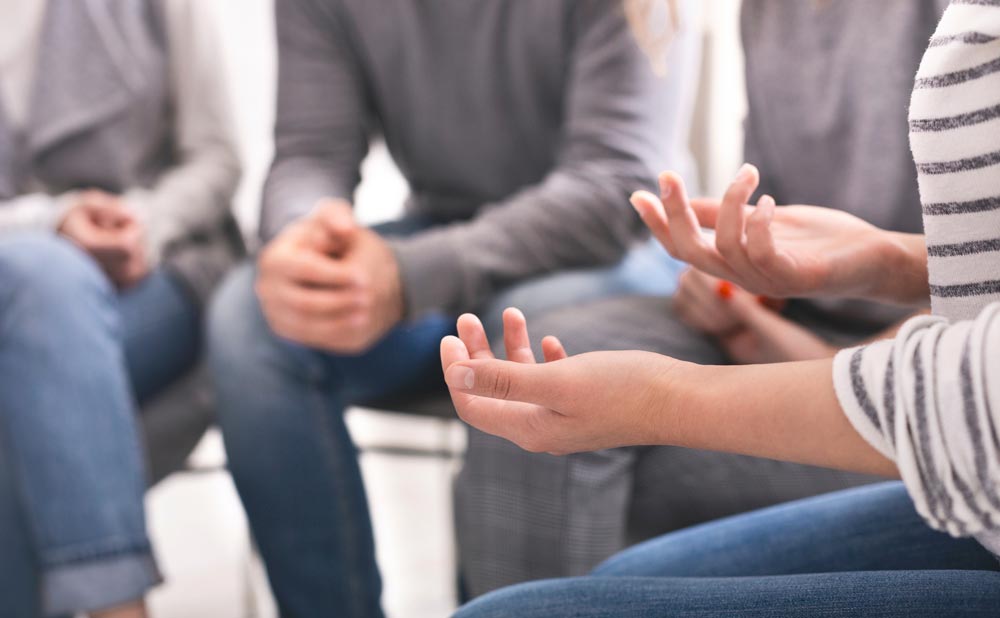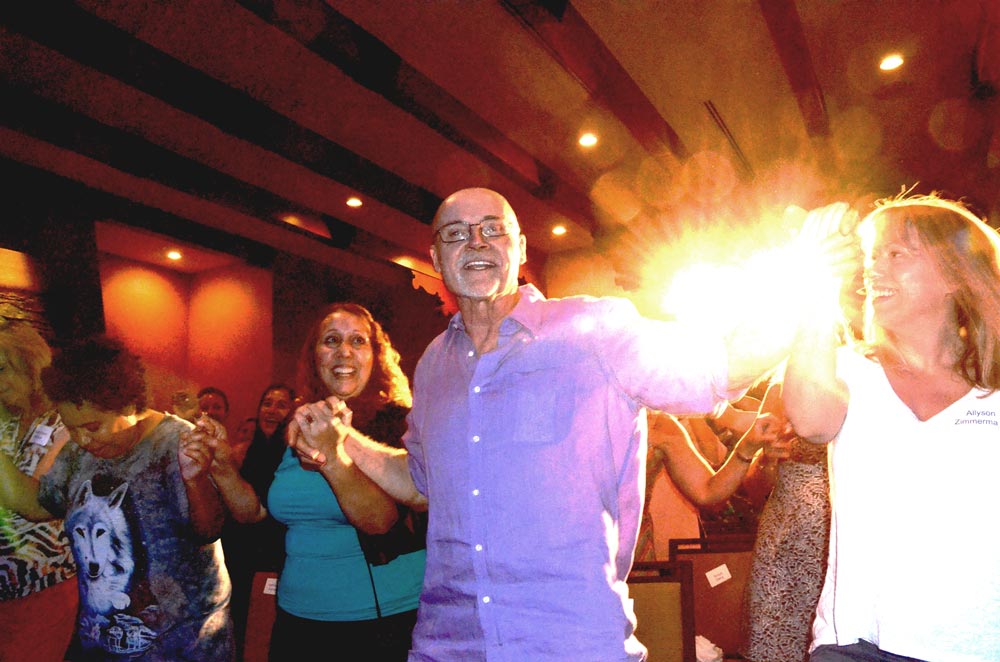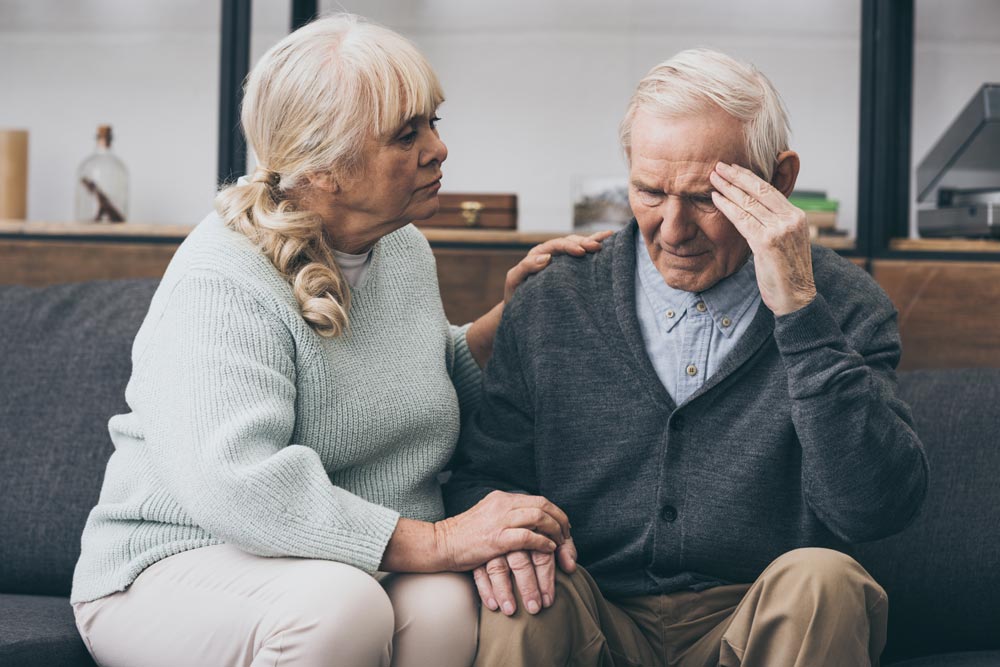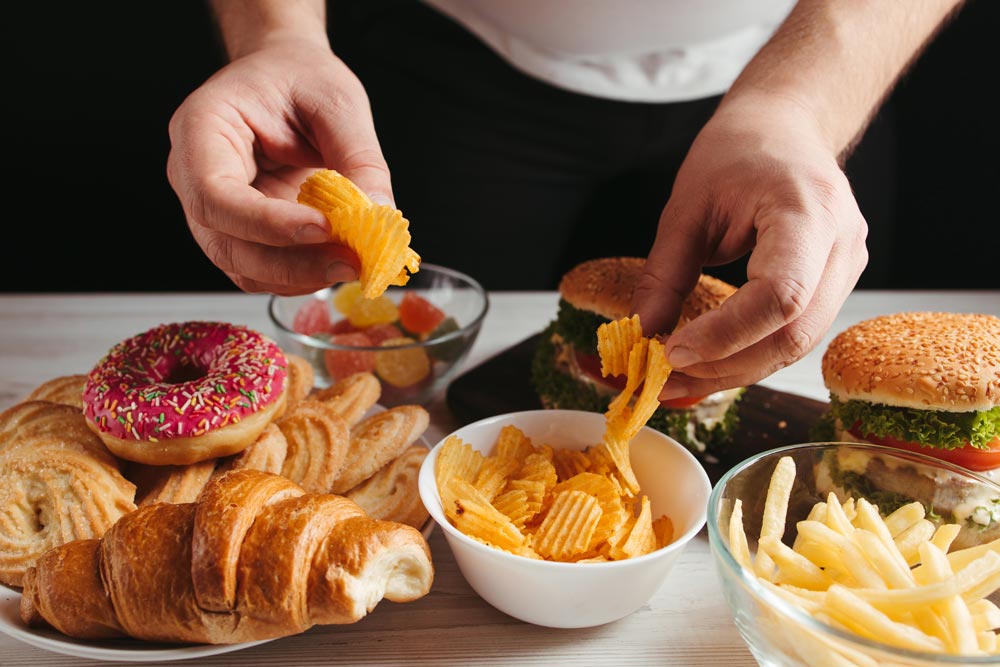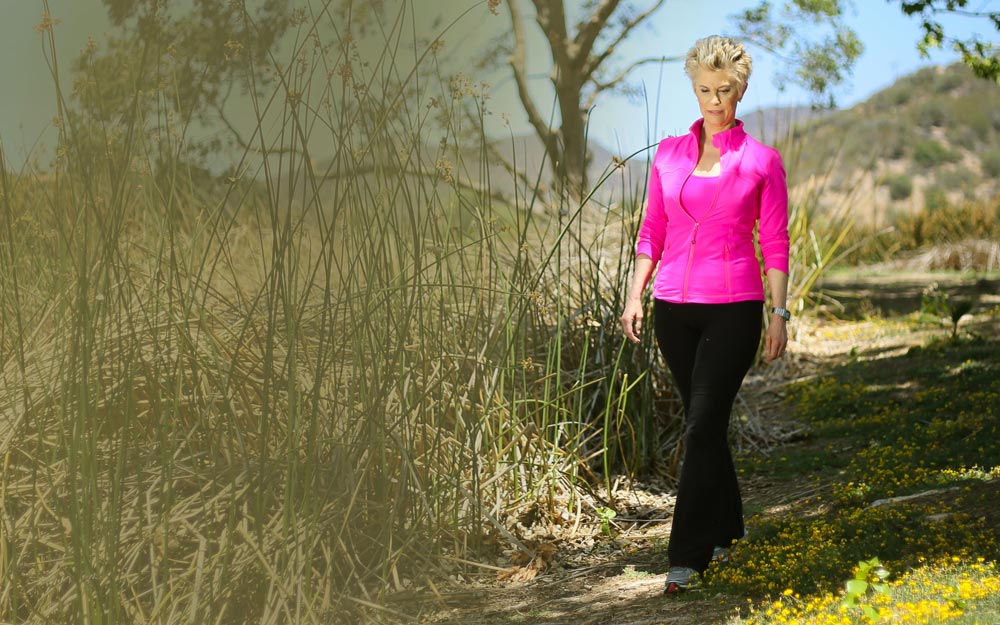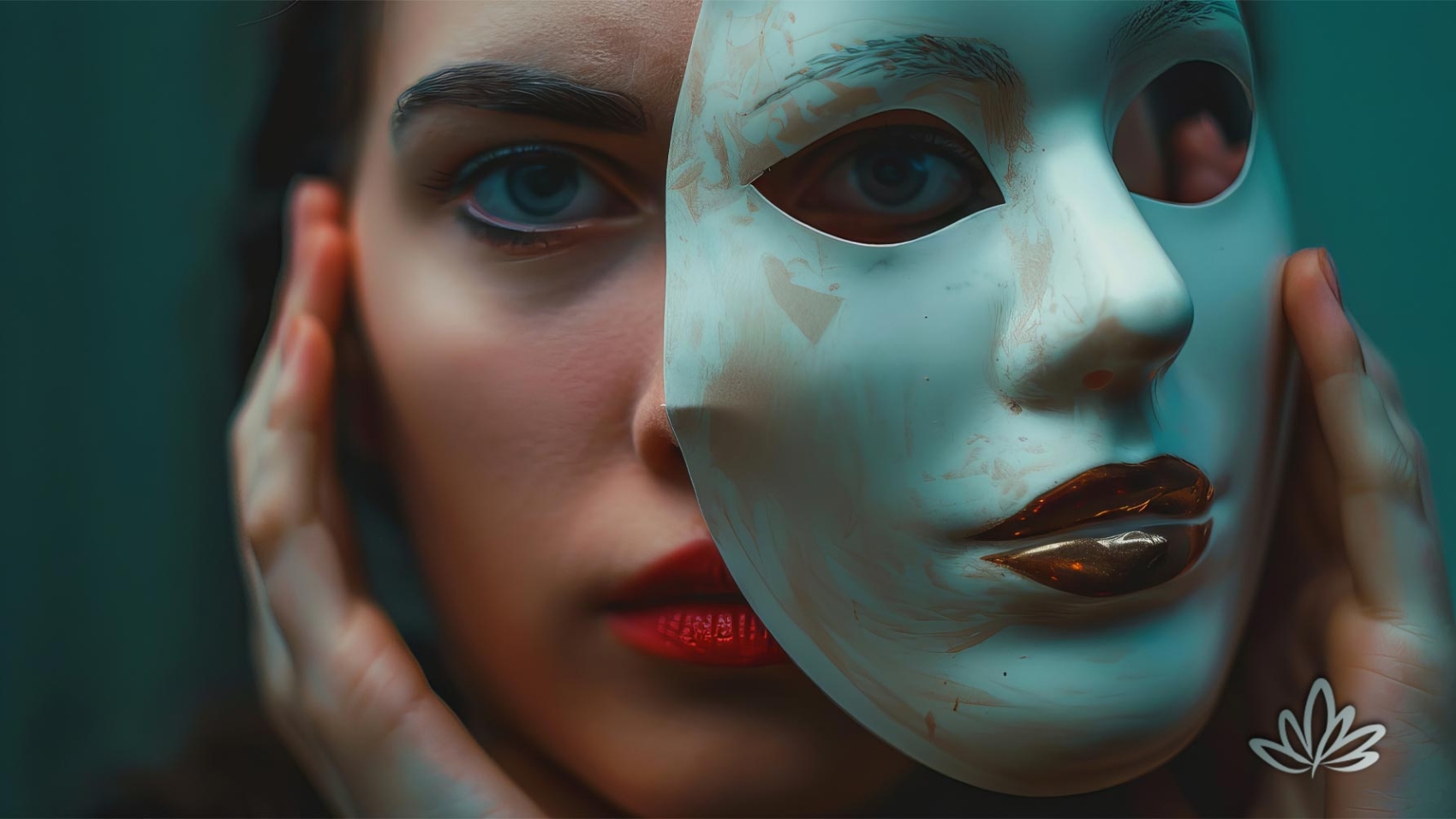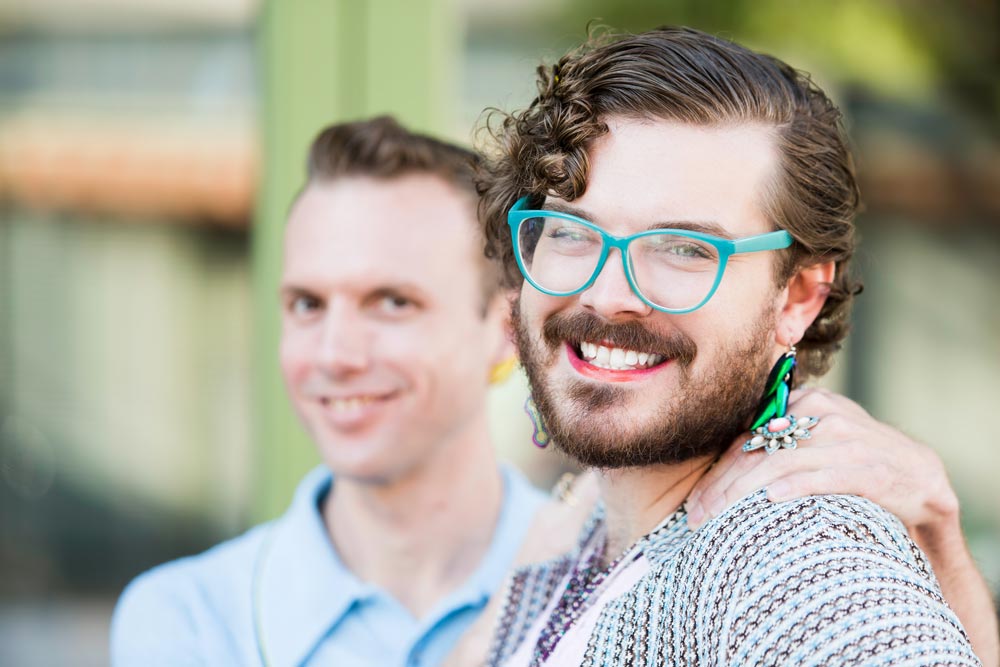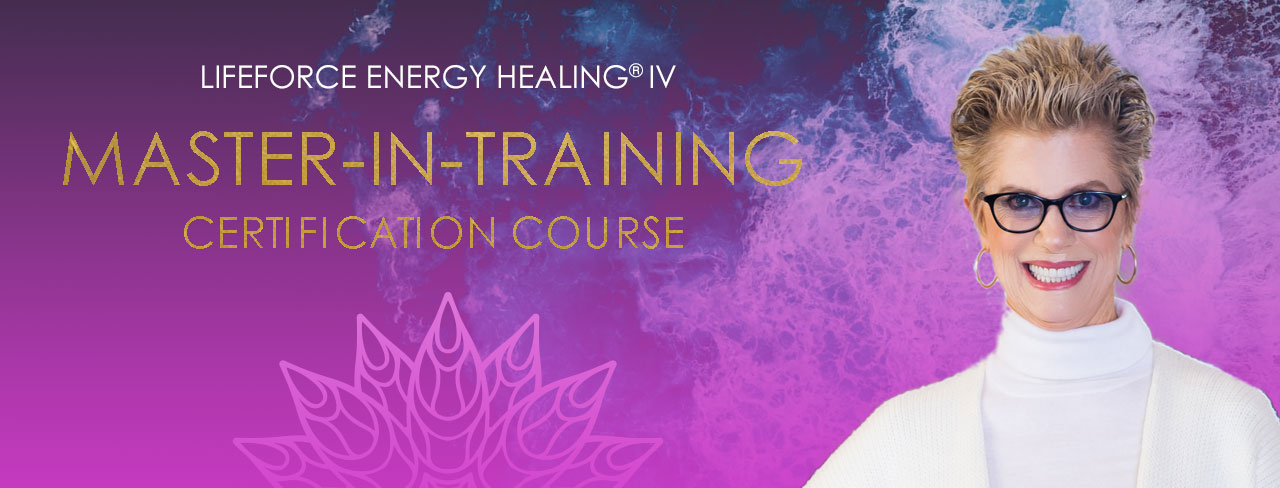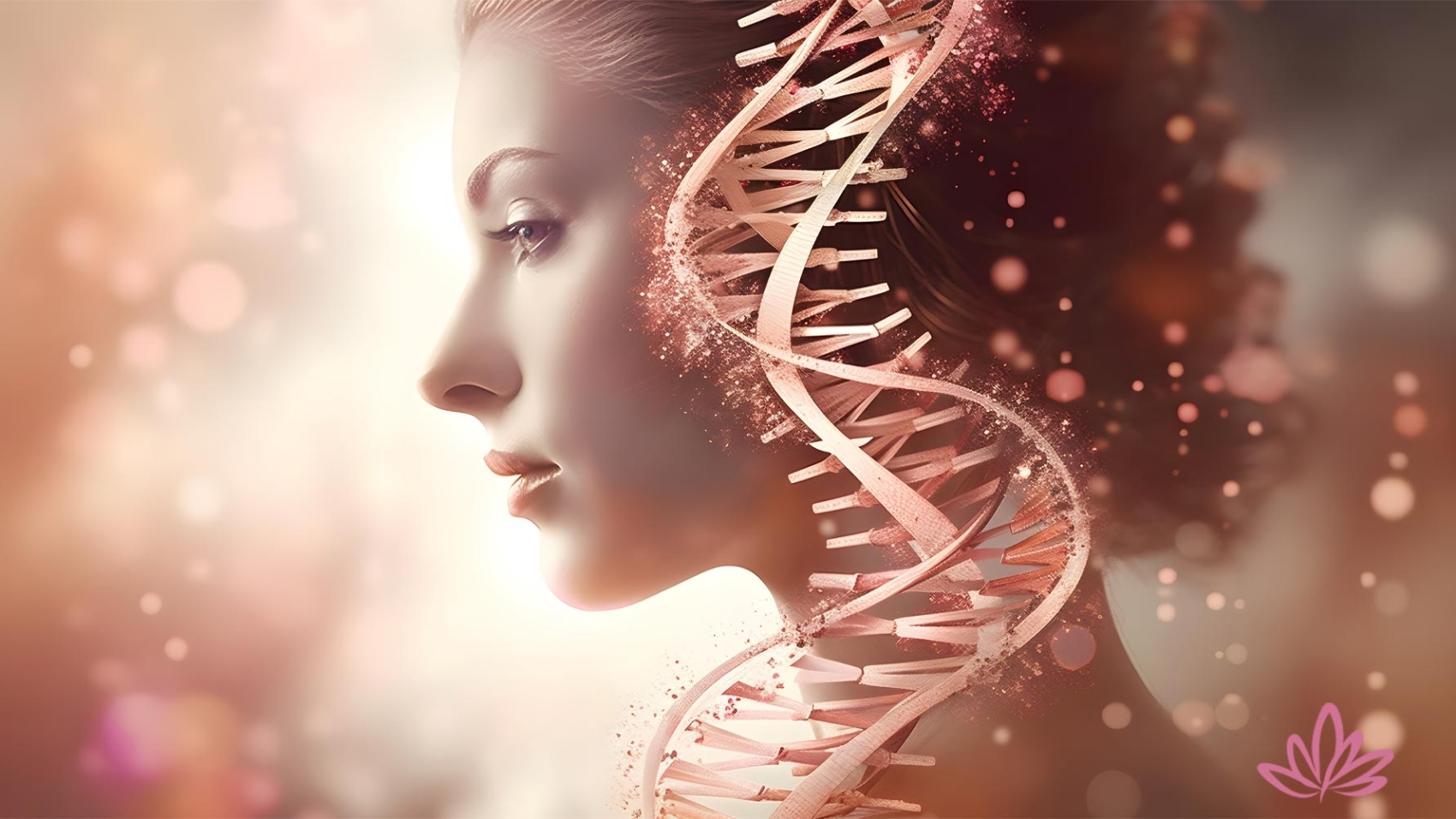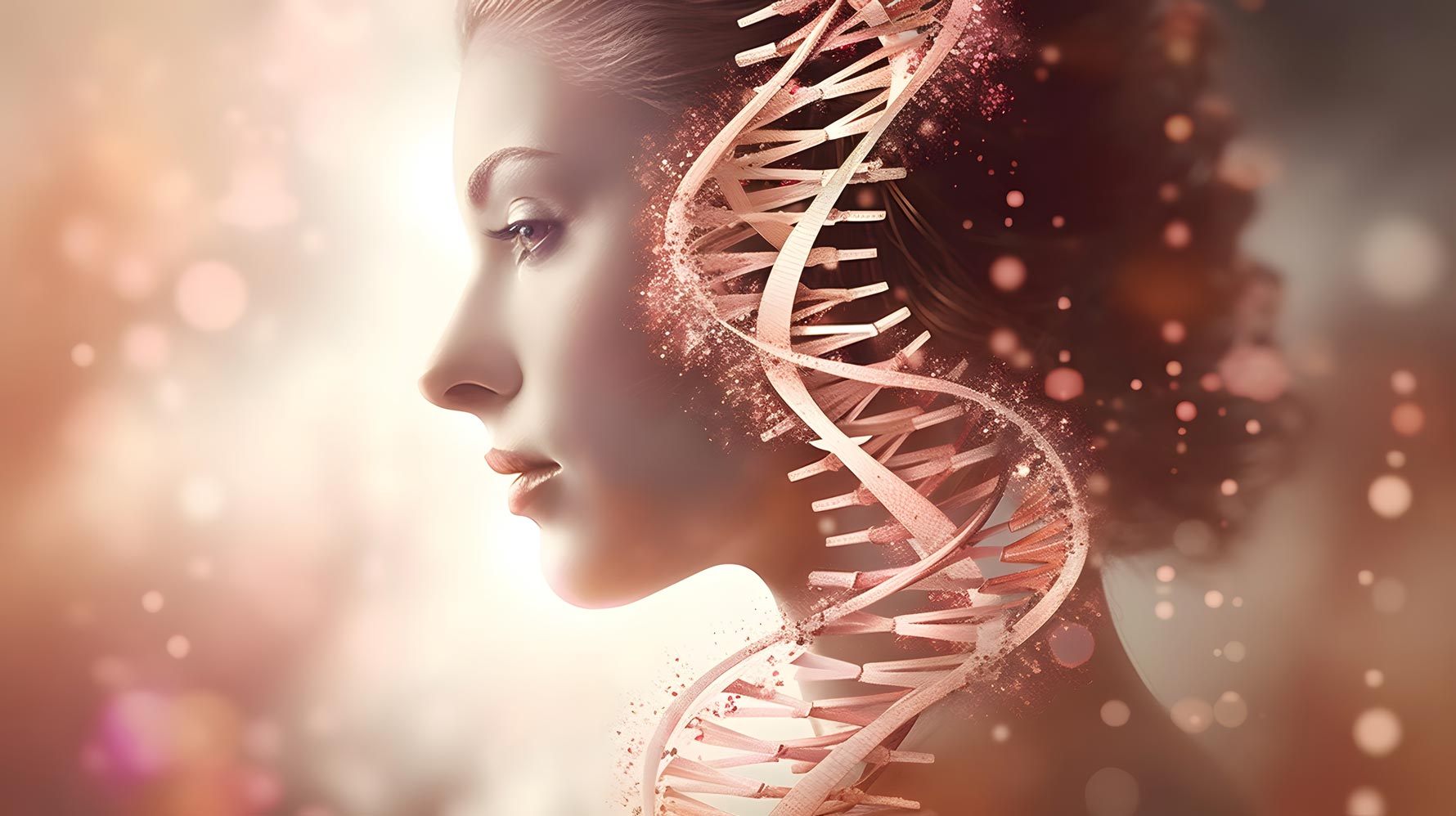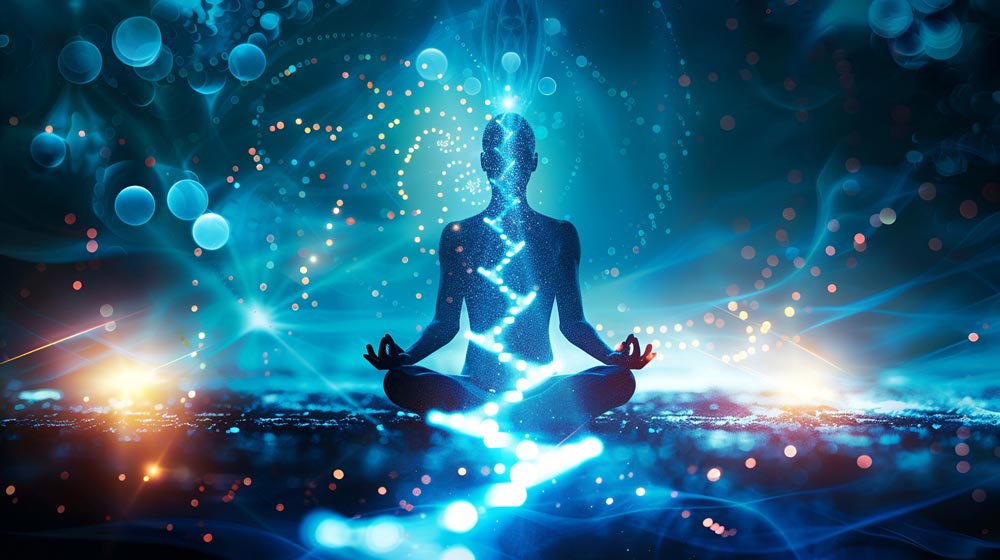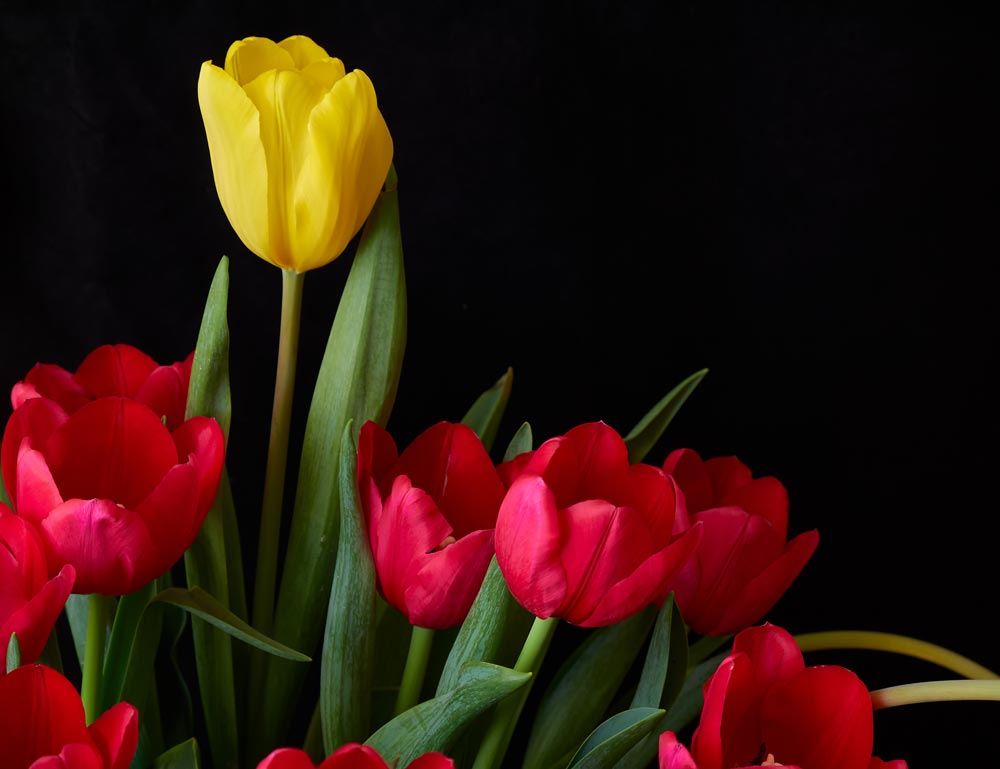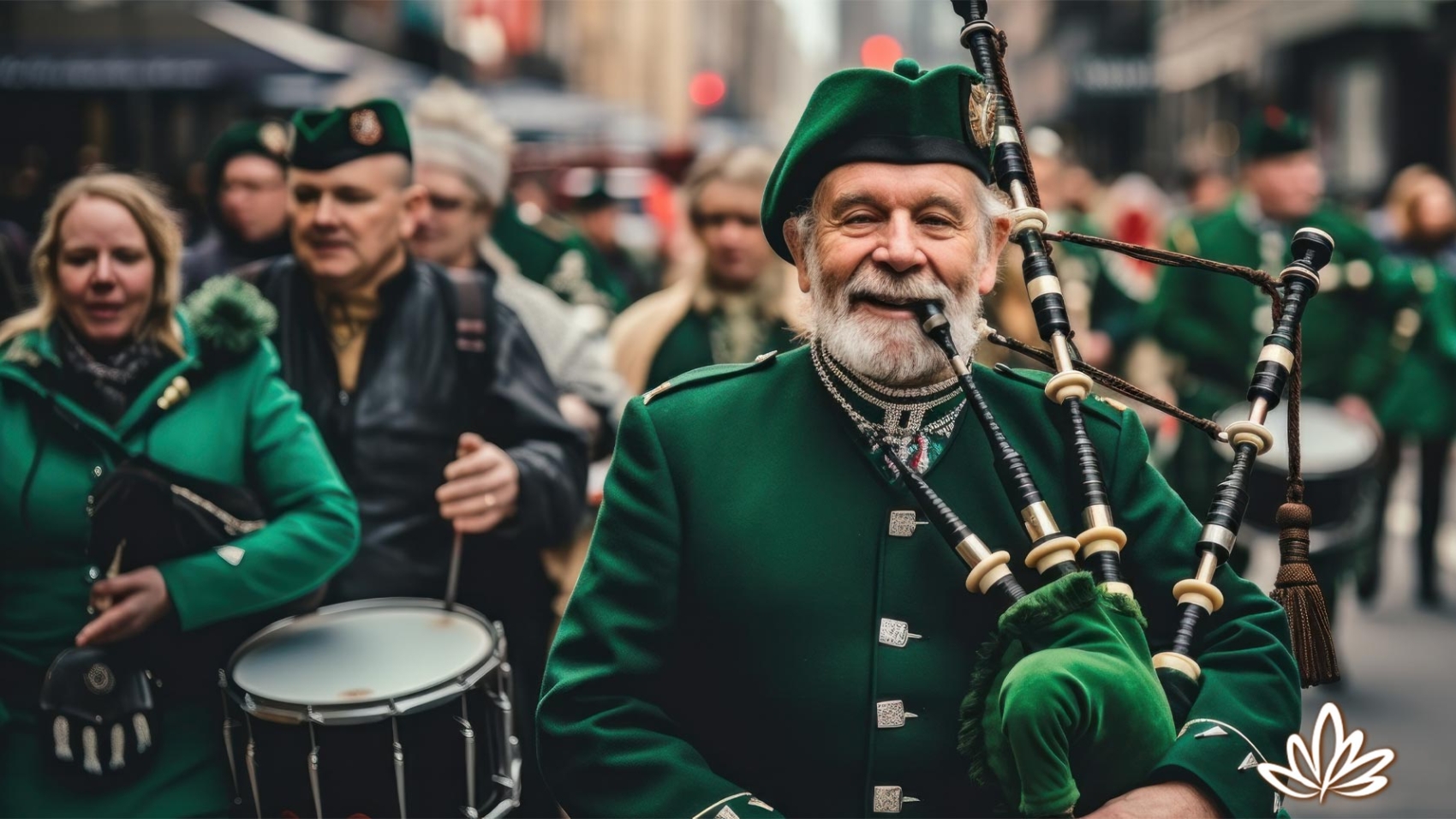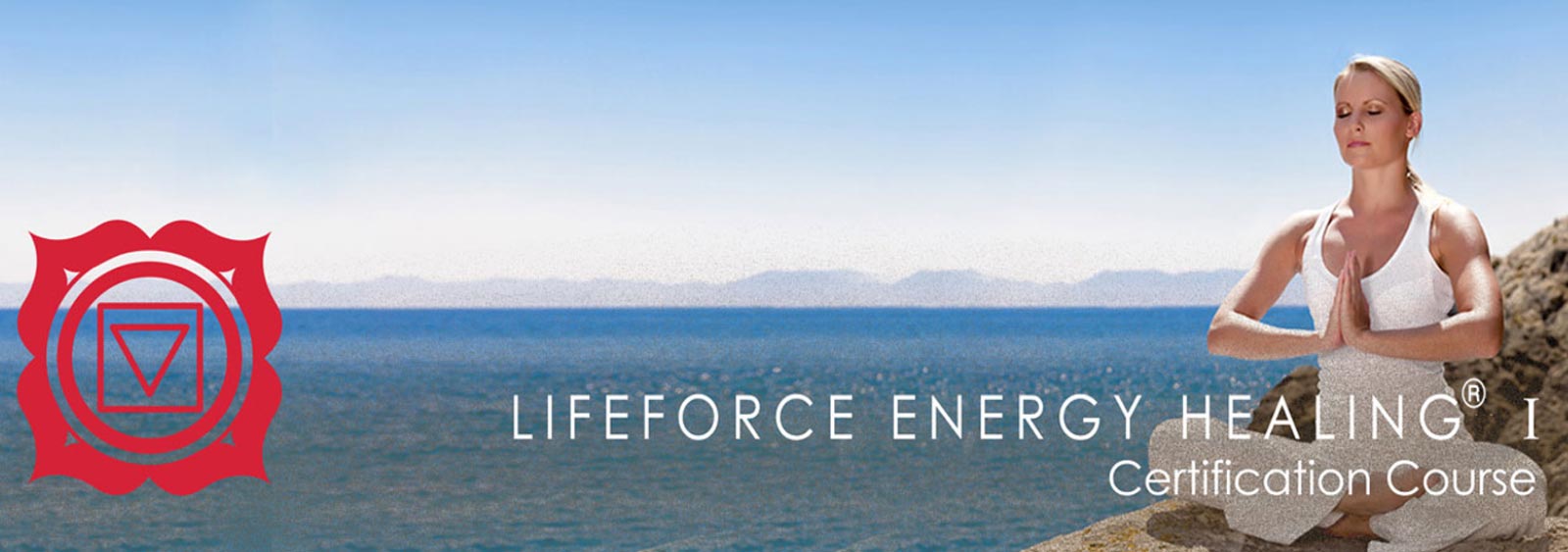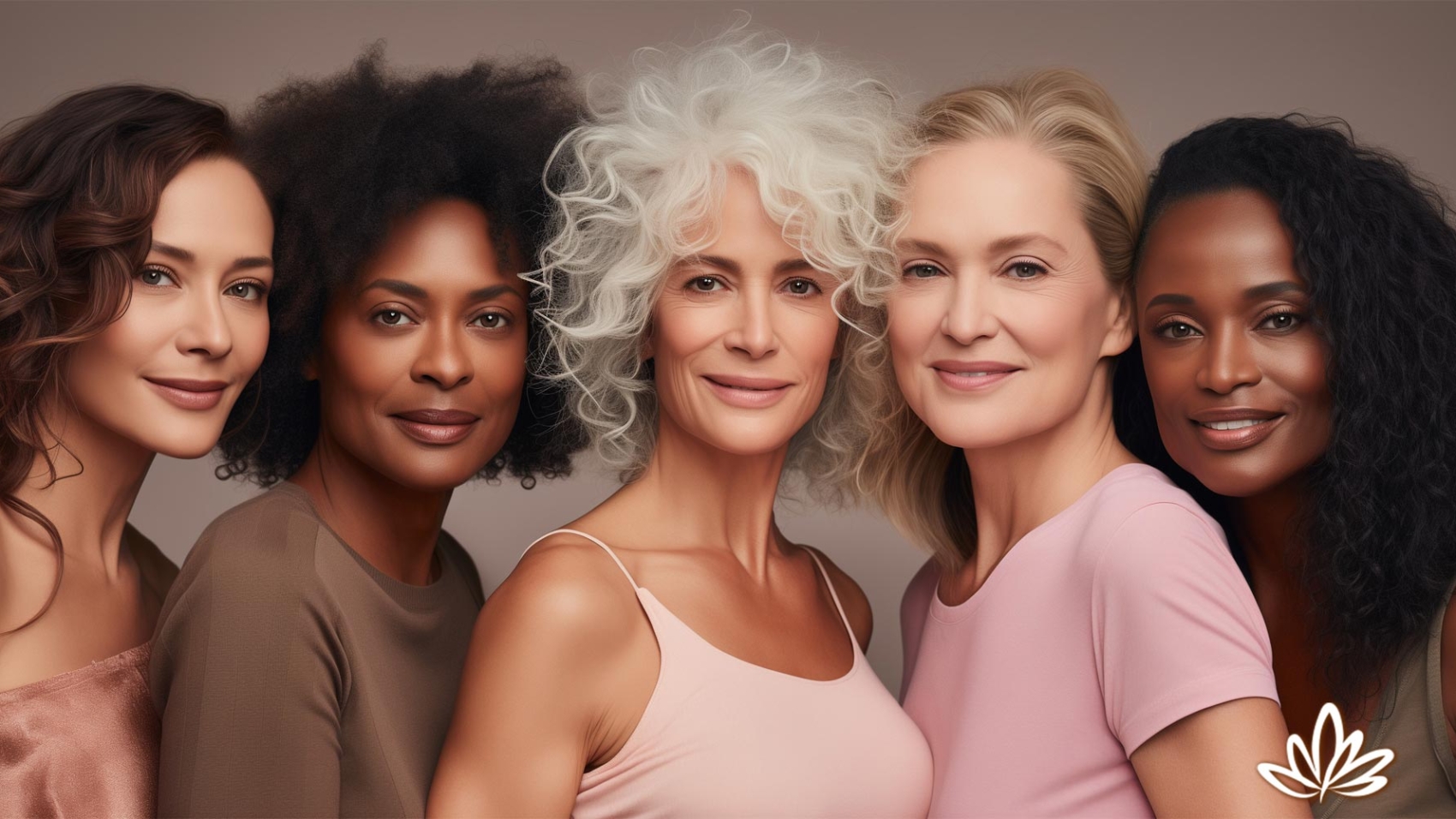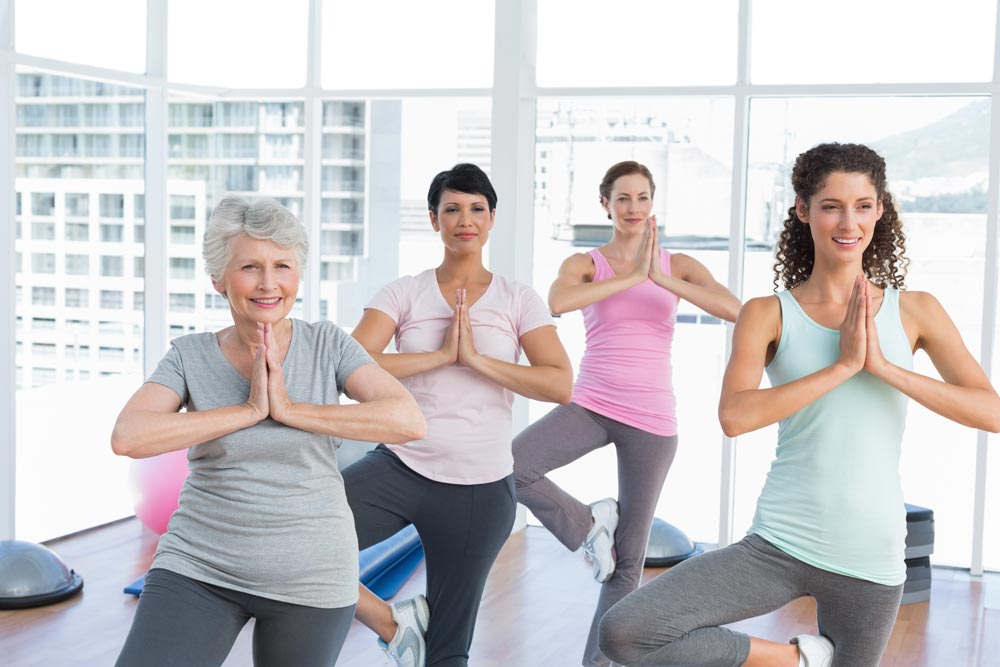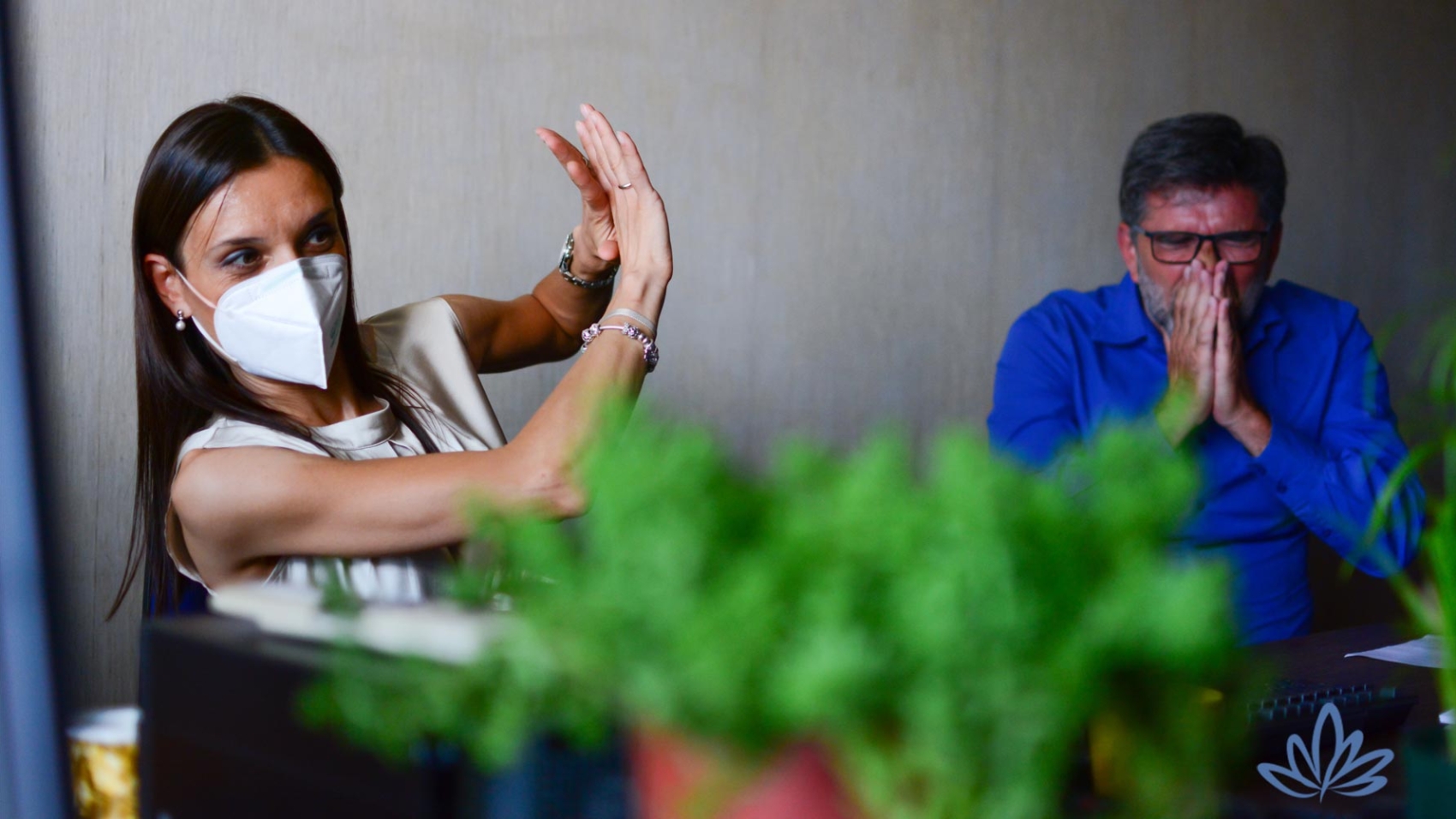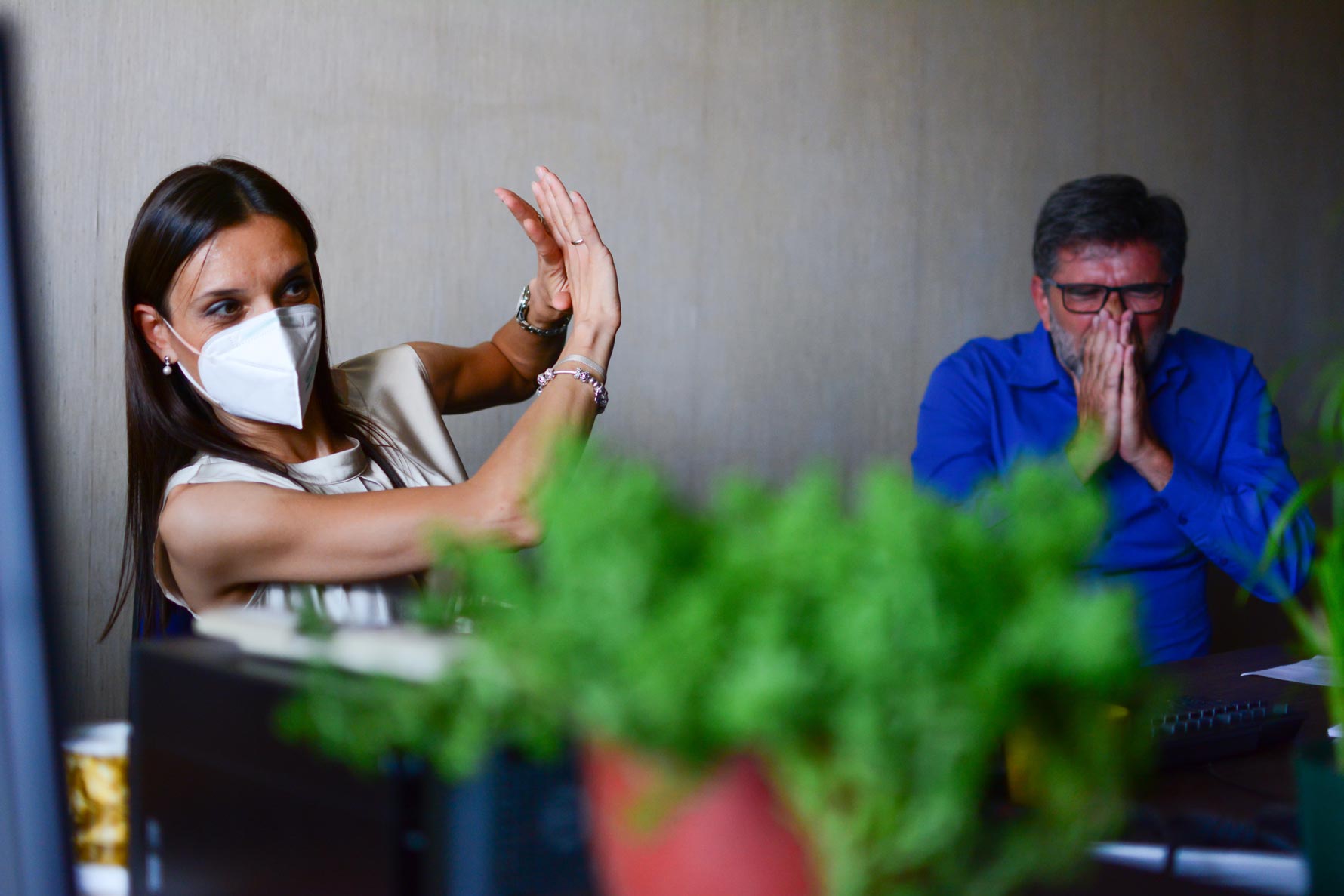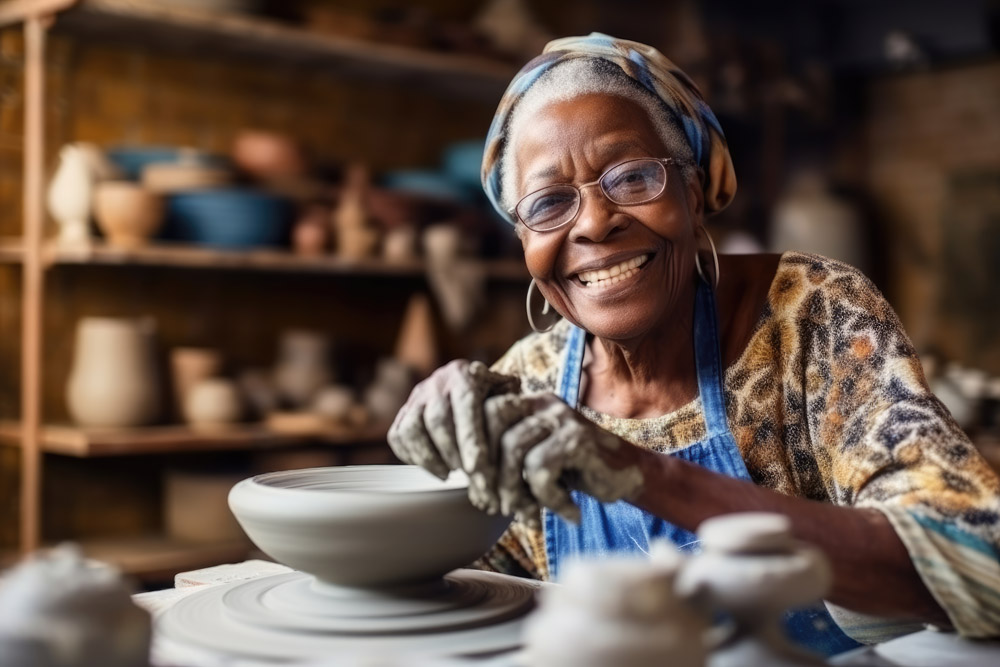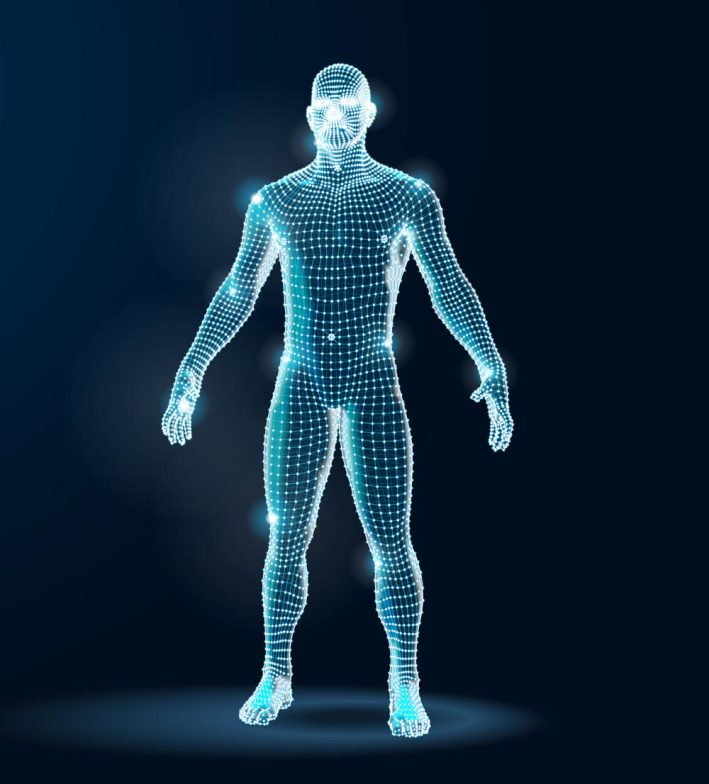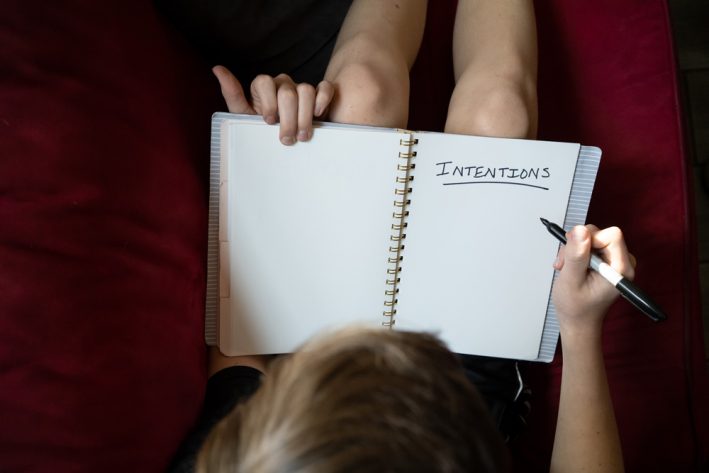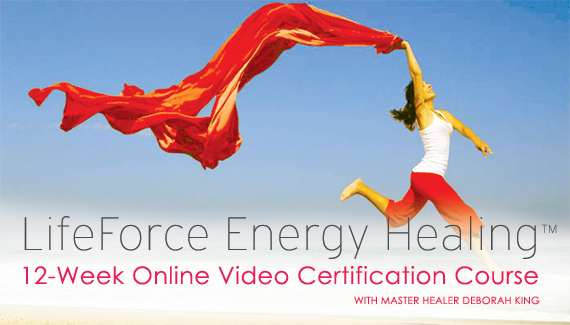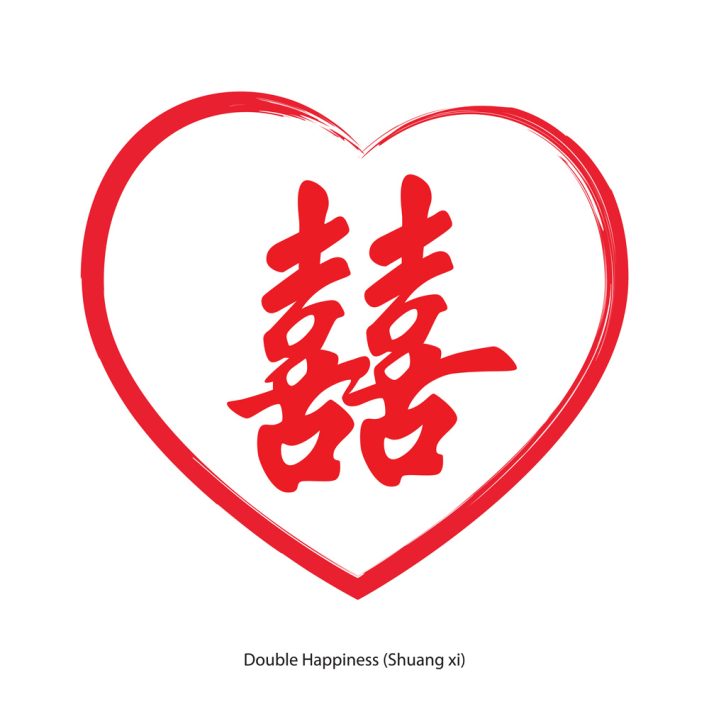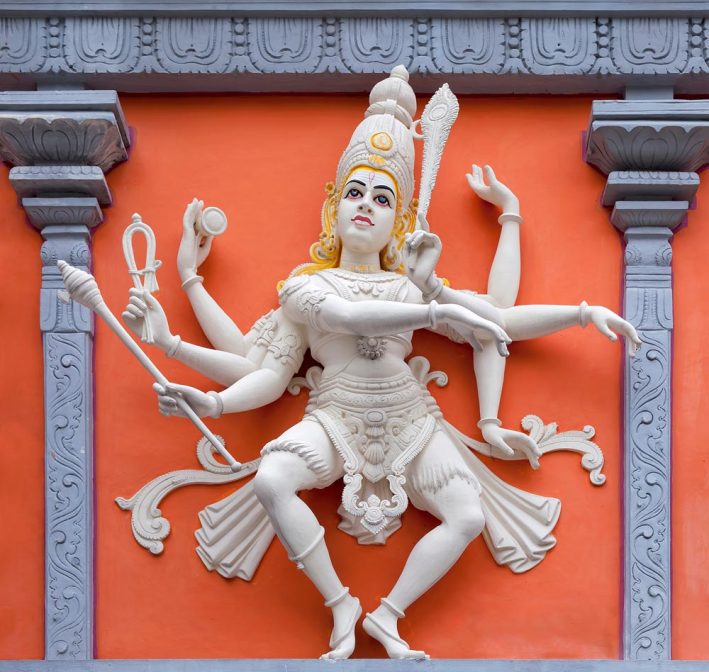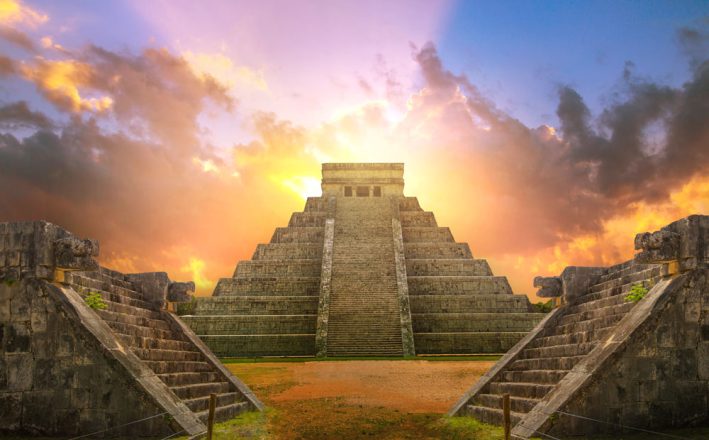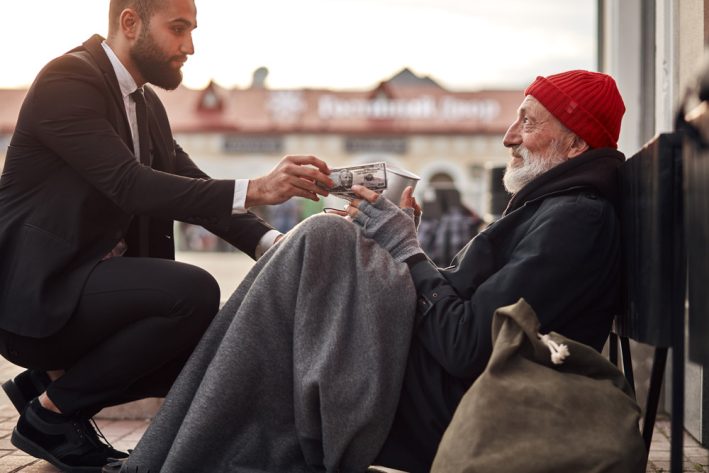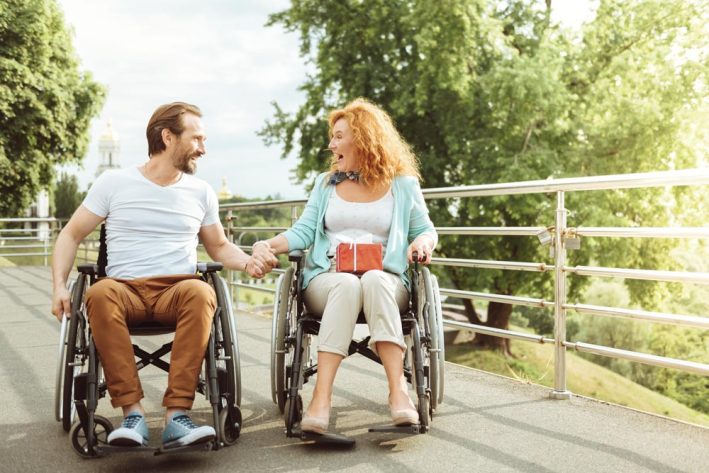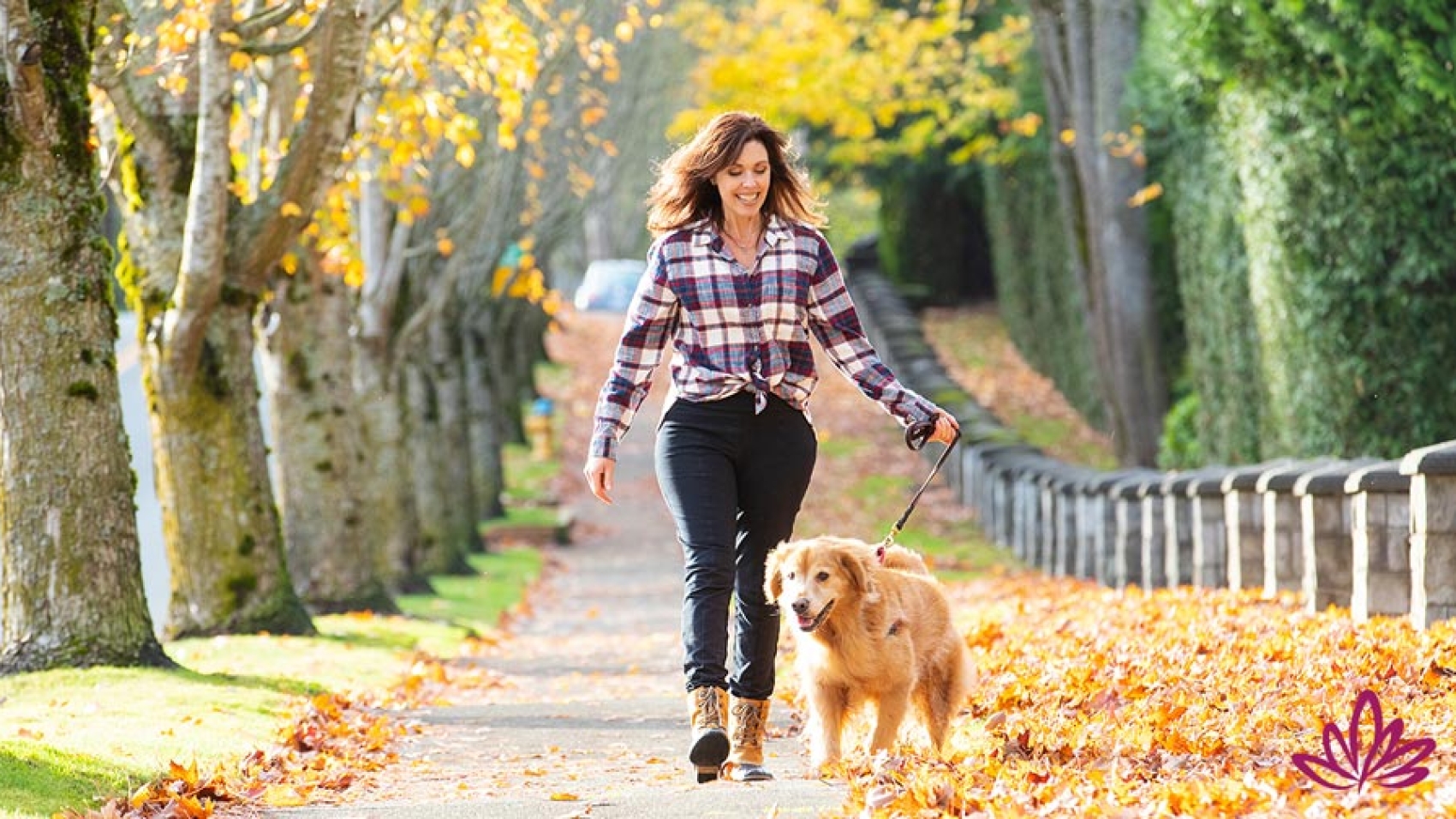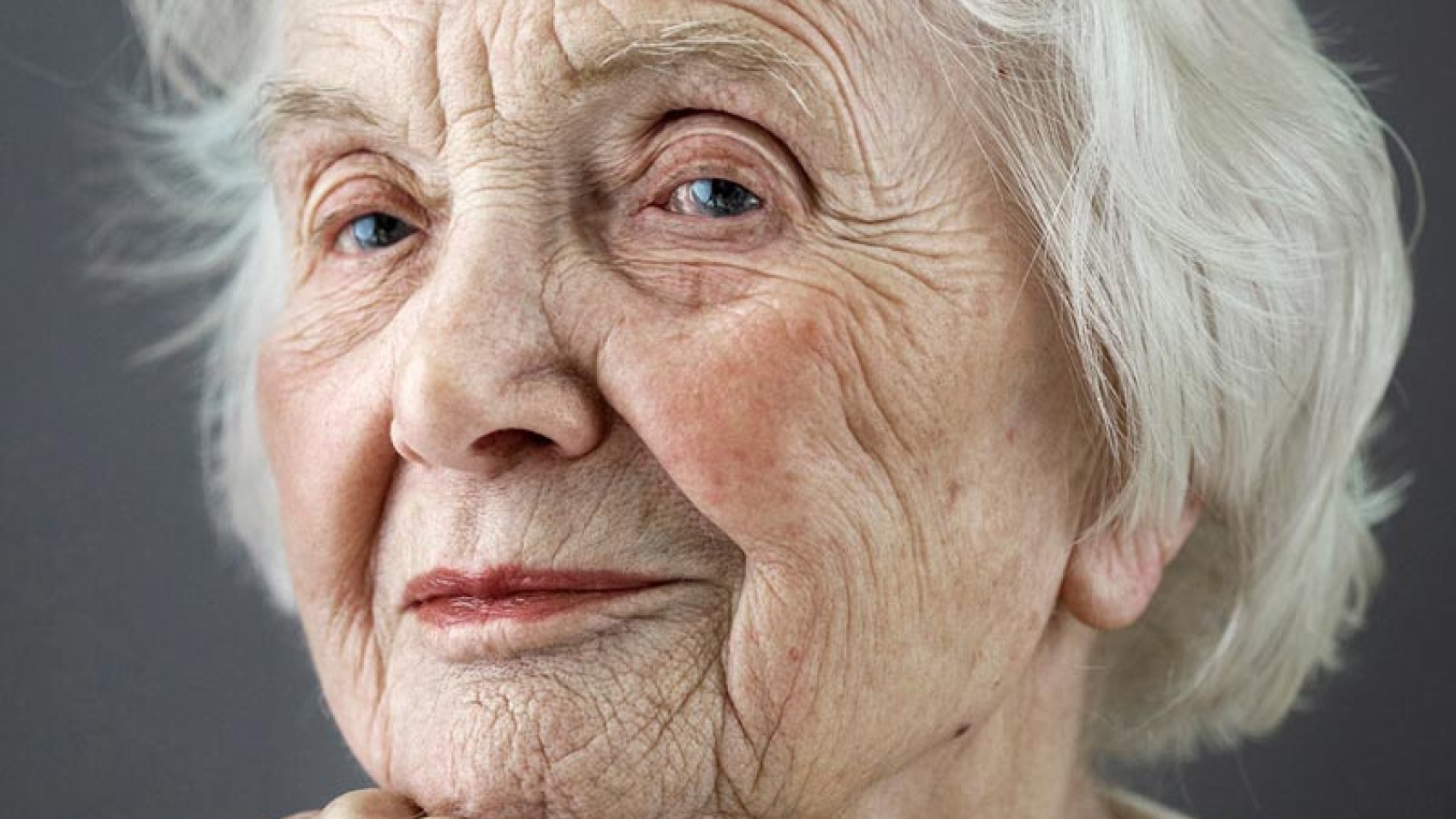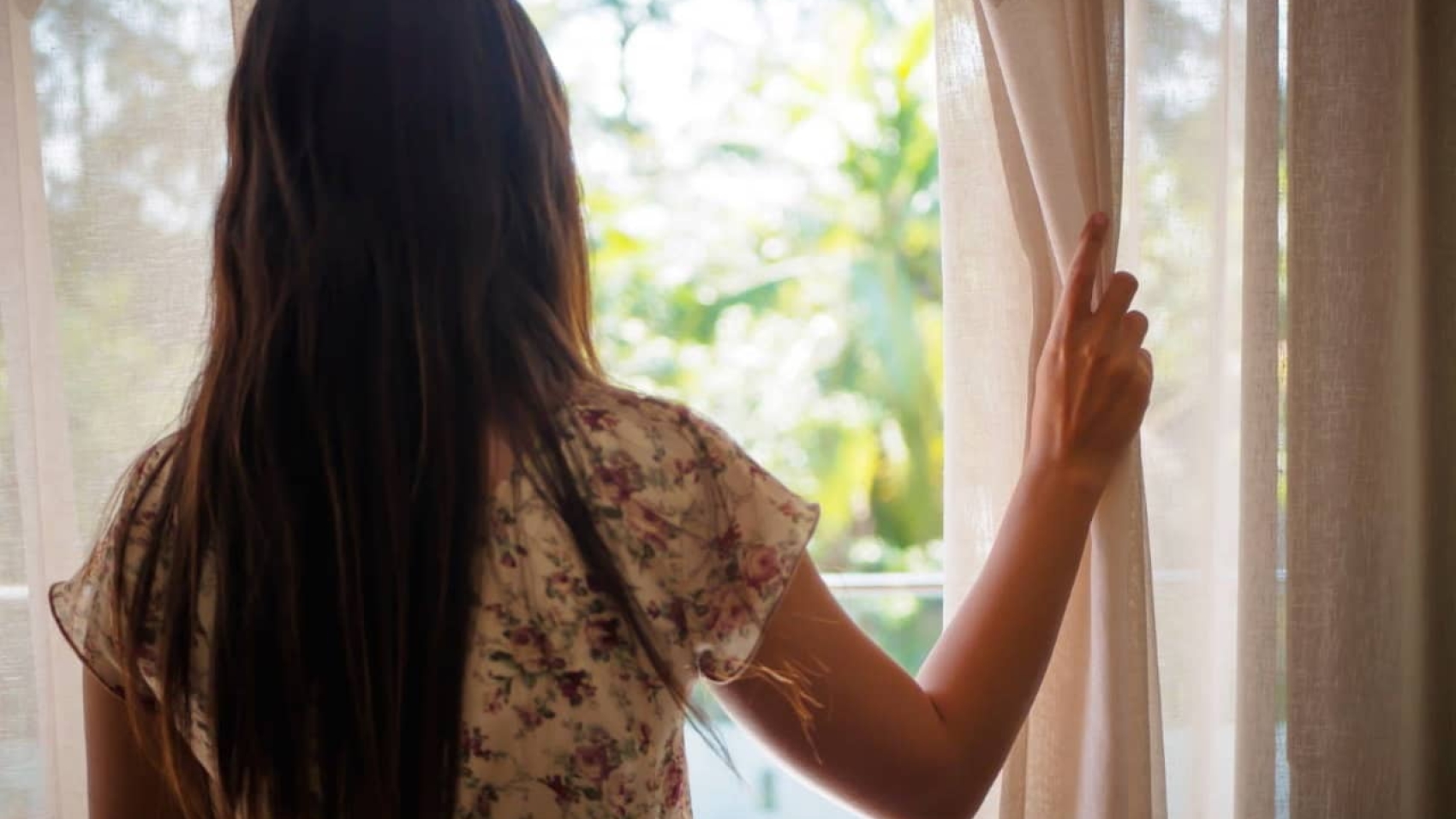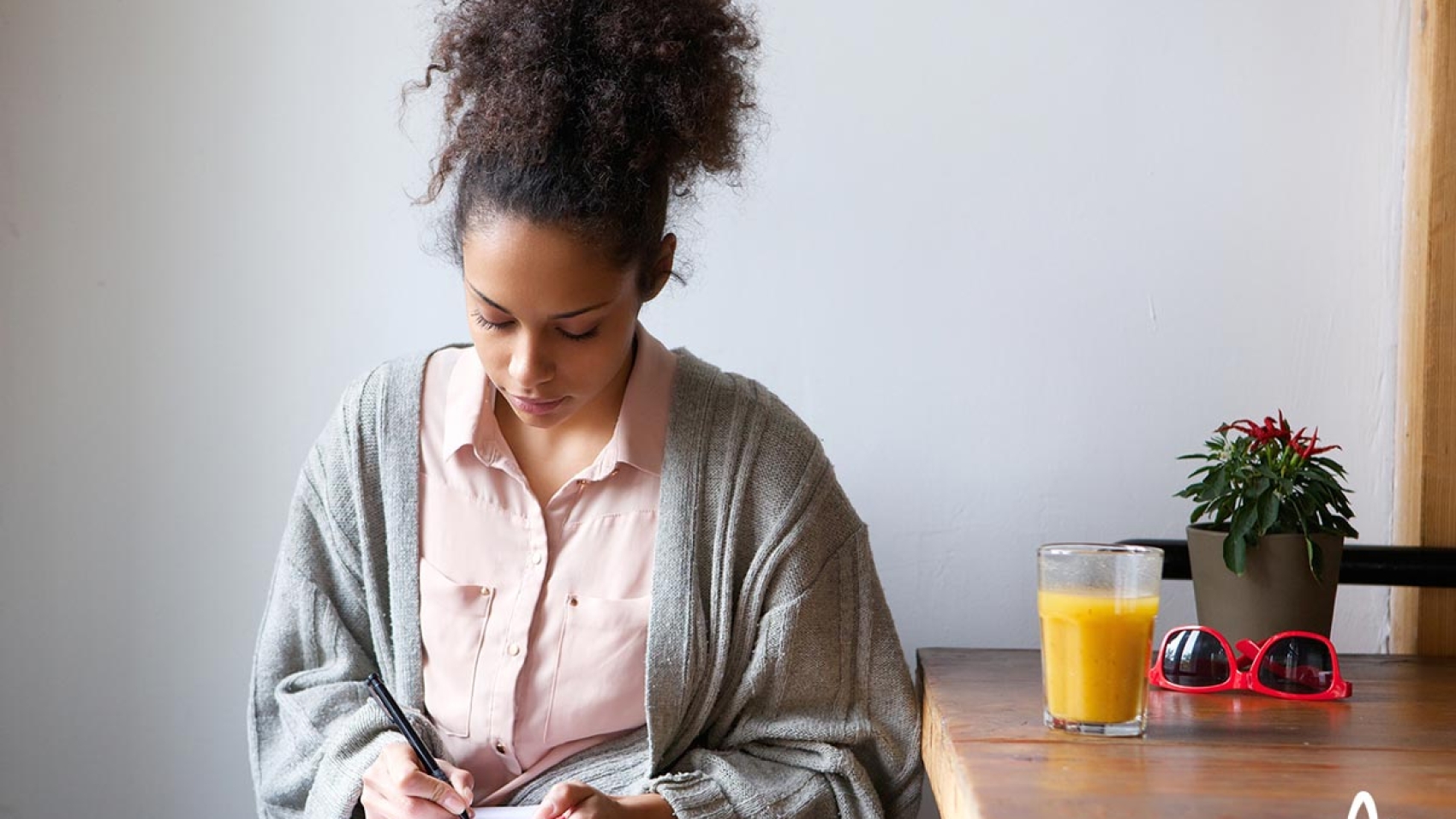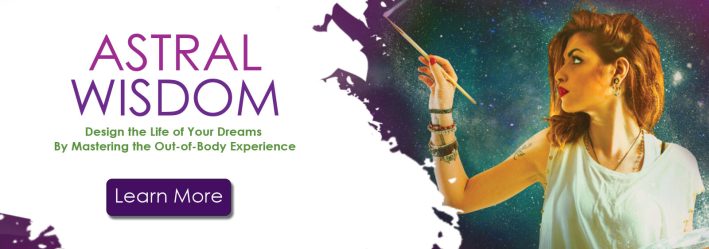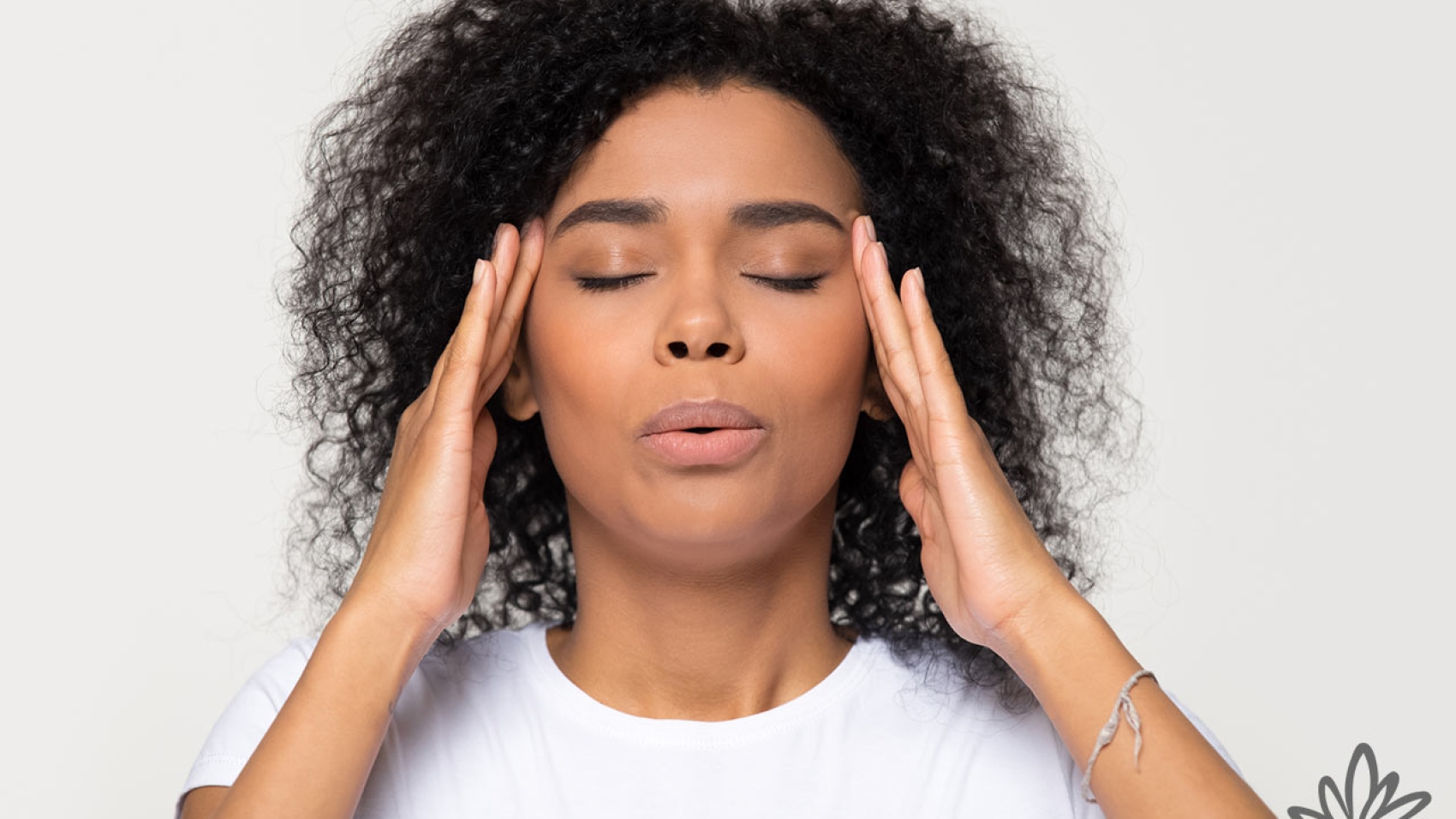Eating with the Seasons
Your Ayurveda guide to healthy eating for your body type
Ayurveda is an ancient energy medicine protocol based on the idea that the universe is composed of five elements — air, fire, water, earth, and ether — and so are humans, and all other life forms and matter, as living progeny of the universe.
The rishis (accomplished and enlightened seers) proclaimed that, as microcosms of nature, all five elements exist in each of us and are represented by three doshas (energies).
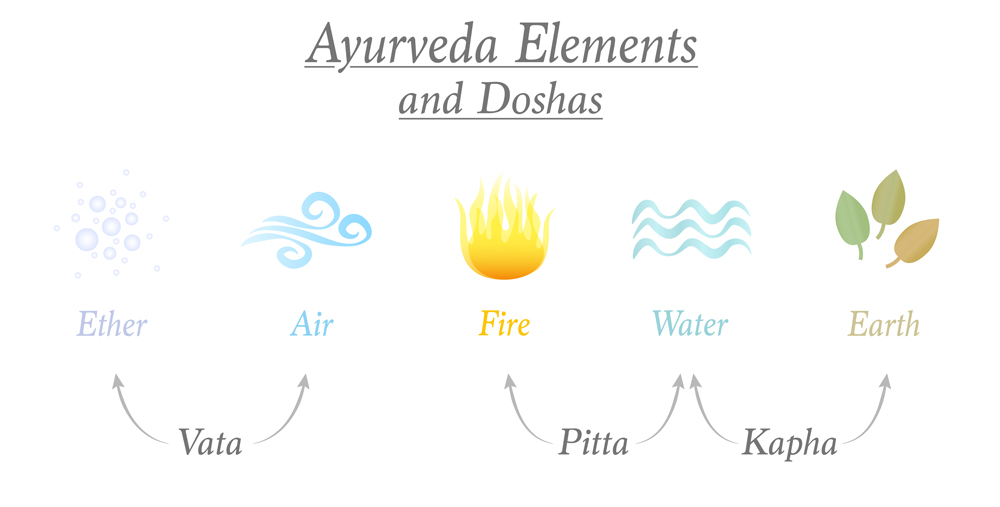
VATA (air and ether) is the force that directs nerve impulses, circulation, respiration, and elimination.
PITTA (fire and water) is the force that governs digestive metabolism and organ and tissue systems.
KAPHA (water and earth) is the force responsible for growth and structure (protection and integrity of the being or element).
These three energies are where your body connects with your mind—the place where your thoughts turn into matter that affects how well balanced you are as a being. When any of these three energies go out of whack, Ayurveda offers specific lifestyle and nutritional guidelines to help reduce the turbulence so your body and mind can be restored to balance. In Ayurvedic terminology, a healthy person is defined as “she whose doshas are in balance, appetite is good, all tissues of the body and all natural urges are functioning properly, and mind, body, and spirit are cheerful.”
Your unique mind-body constitution is called prakruti, which means “nature”— your individual nature and body type. It is immensely helpful to learn what your mind-body nature is — which of the three energies are most prominent in your make-up — so you know how to keep them in balance.
TAKE STOCK OF YOUR MIND-BODY BASELINE
By looking closely at your tongue, face, eyes, nails, and lips over a period of time, you can learn which of your energies need to be adjusted. Ayurvedic practitioners can also determine which of your energies are on overload by taking pulses similar to those acupuncturists consult to determine how strong, weak, flat, fast, or shallow these indicators are.
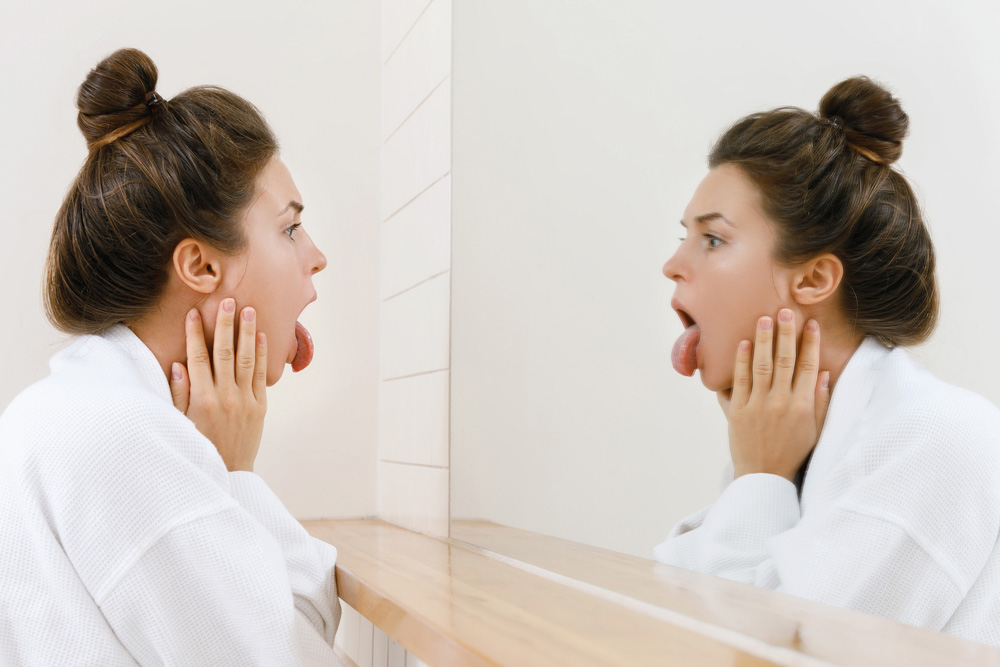
DIET, EXERCISE, DAILY, & SEASONAL ROUTINES DETERMINE LEVELS OF WELLBEING FOR ALL THREE MIND-BODY ENERGY TYPES
If you’re principally Vata, your key to optimal wellbeing is regularity. If you’re experiencing poor digestion, if you catch colds easily, or if you develop insomnia and fatigue, you’re likely experiencing excessive oppositional energies.
If you’re quite Pitta, your key to optimal wellbeing is moderation. When you find yourself flying off the handle or experiencing inflammatory conditions, or if you’re a super-stressed workaholic or overachiever, your energies are out of balance in this area, and need a tune up.
If you’re mostly Kapha, your key to optimal wellbeing is stimulation. When your energies are out of balance, you will most likely experience sinus congestion, poor circulation, and sluggish digestion which can lead to obesity and depression.
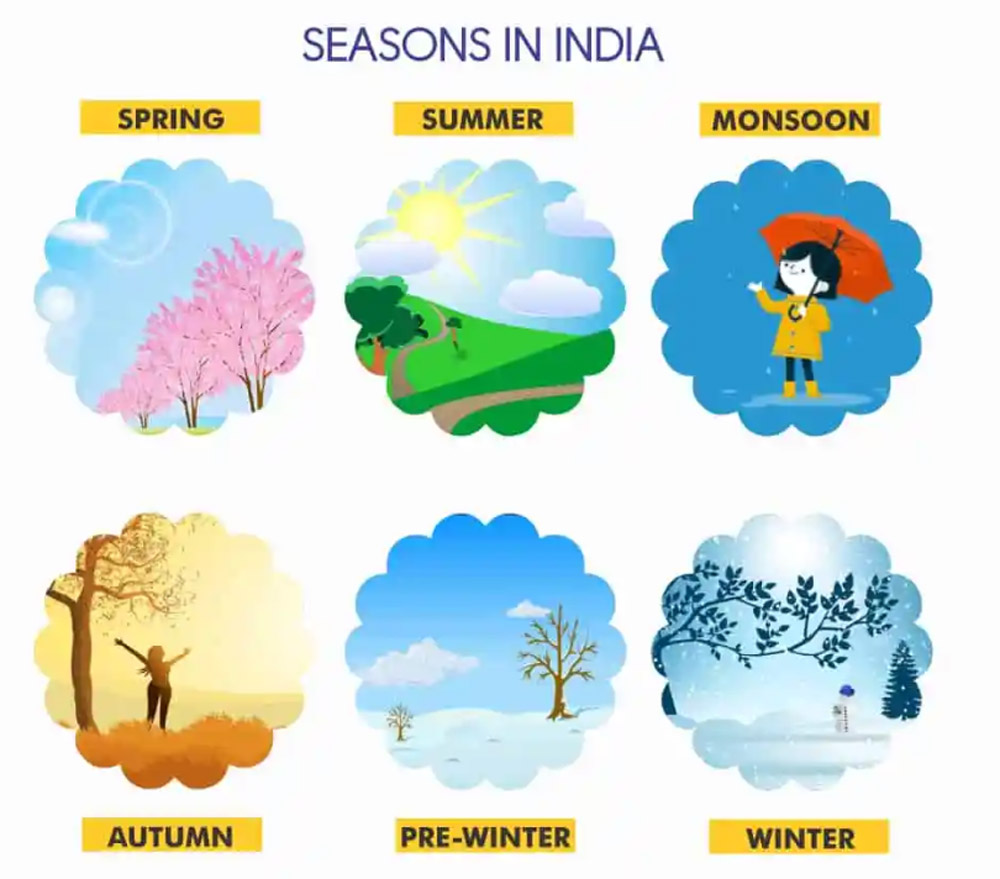
Ayurveda outlines a set of seasonal guidelines known as Ritucharya. The guidelines serve as prescriptions for diet and lifestyle changes throughout the year to help keep your mind clear, lift and fulfill your spirit, and help ensure vibrancy within your entire body.
According to Ayurveda, each year is divided into two periods, each covering three seasons:
Uttarayana, the cold months, containing the seasons Sharath, Hemanta, and Shishira
Dakshinayana, the warm months, containing the seasons Vasanta, Grishma, and Varsha.
Why eating for the season is crucial to greater wellbeing
If you’re a nature lover, as I am, you have probably noticed how differently wild ones behave and eat during the four seasons we usually think of: spring, summer, winter, and autumn. Their bodies, like our own, instinctively recognize and respond to seasonal environmental cues and conditions by processing nutrition so their bodies can prepare for the upcoming span of time that lies directly before them.

Meat-eating mammals become voracious as the cold winter months begin to announce their arrival. The bodies of bears, raccoons, wild cats, and wild dogs in their hemispheres begin to fill out as some species ready their bodies for hibernation and other species prepare their bodies for days or weeks of starvation. It’s almost as if Nature/Source has placed a calendar in their craniums that prompts them to consume as much as they can find.
Well, surprise, surprise, surprise (as Gomer Pyle would say)! We humans have the same internal promptings. As the cold months approach, we begin to crave foods that help calm us even as they pack on extra fat, even though you aren’t environmentally bound to seasonal deprivation, as were our ancestors, not long ago, before refrigeration and mass transportation. But our bodies are still designed to operate the way they were back then, so eating in opposition to your promptings can set you up for a compromised immune system, unhealthy weight gain or loss, less healthy and robust skin and hair, and some illnesses. So, eating with the seasons does two things: It makes you feel good and it’s a powerful way to help ensure your wellbeing physically, mentally, and emotionally.
In the West, the Ayurveda practice of Ritucharya is characterized by four seasons, unlike India where there are six. In both countries, though, the energies go through a cycle of accumulating, aggravating, and palliating during the seasons, so our goal is to keep them as balanced as possible by way of lifestyle and diet.
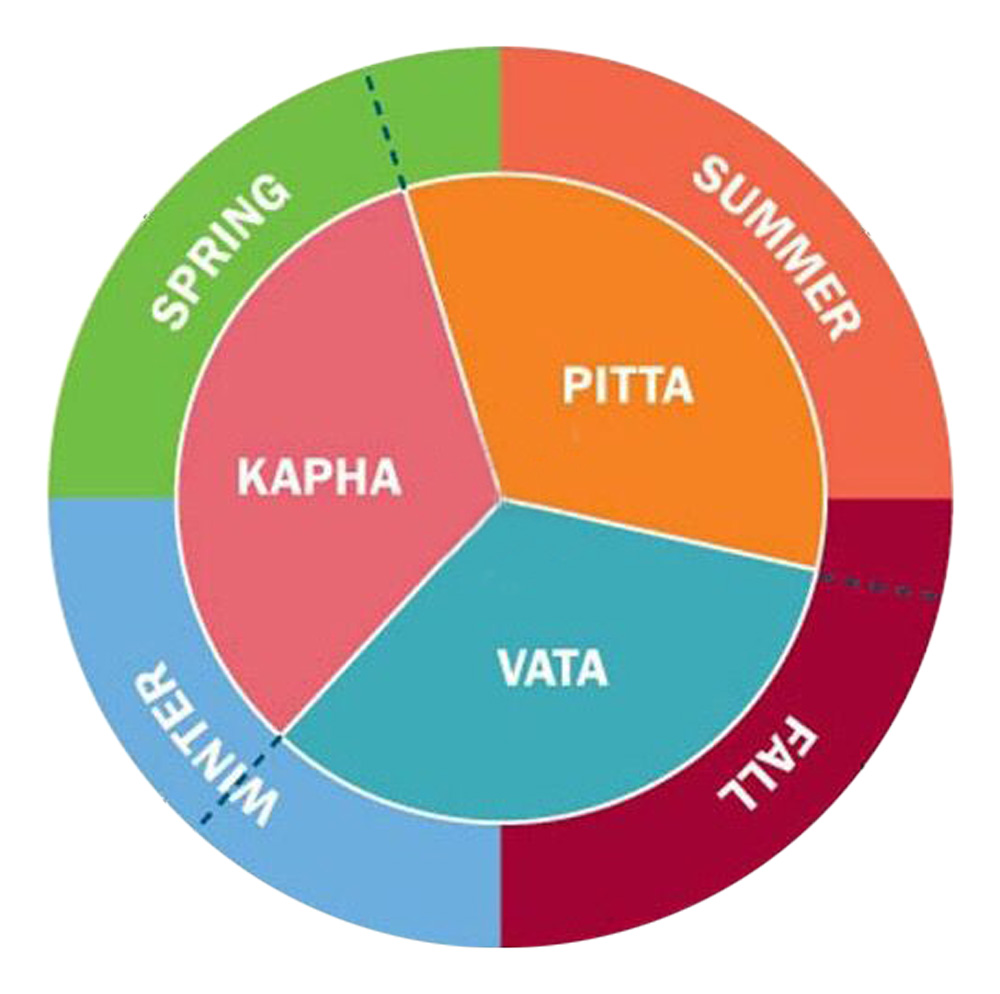
In the U.S. and in Canada, Vata season runs from autumn to early winter, mid-September to January, Kapha season happens from February to May, and Pitta season goes from June to mid-September. But, depending on where you live in the U.S. or Canada, always take your cues from your natural surroundings and fellow creatures. Up against and above the 54th parallel (the border between the US and Canada), the winter season is considerably longer.
Balance your diet by way of opposing energies. What I mean by this is that, during Pitta season, as just one example, the weather is frequently hot, dry, light, and sharp, so counter those with cool, heavy, and bland foods; avoid sour, spicy, salty, and overpowering foods.
DIETARY INSIGHTS AND INFORMATION
Meat
Beef increases Pitta and Kapha but reduces Vata. It is heavy, thick, tastes sweet and its post-digestive effect is sweet. Eating beef heats your body. Beef increases Pitta and Kapha and reduces Vata.
Chicken is moderately okay for all three mind-body types. Sweet and astringent, its post-digestive effect is pungent (stimulating). It is strengthening.
Fish increases Pitta and Kapha but reduces Vata. Eating fish heats your body.
Dairy
Unsalted butter is sweet, astringent and cooling. It promotes intestinal absorption. It increases Kapha and reduces Vata and Pitta.
Unsalted cheese is sweet and sour and cooling. It increases Pitta and Kaphs and decreases Vata.
Cow’s milk is sweet and cooling. It increases Kaph and decreases Vata and Pitta.
Eggs are sweet, astringent and heating. Post digestively, they are pungent. Eggs increase Pitta and Kapha and decrease Vata.
Ghee is sweet and cooling. Taken in excess, it increases Kapha. Taken moderately, it is good for all three energies. It promotes digestion and strengthening.
Goat’s milk is sweet, astringent, and cooling. Post digestively, it is sweet. Increases Vata, decreases Pitta and Kapha. Relieves cough and fever.
As always, consult your health care provider before you undertake any new health regime.
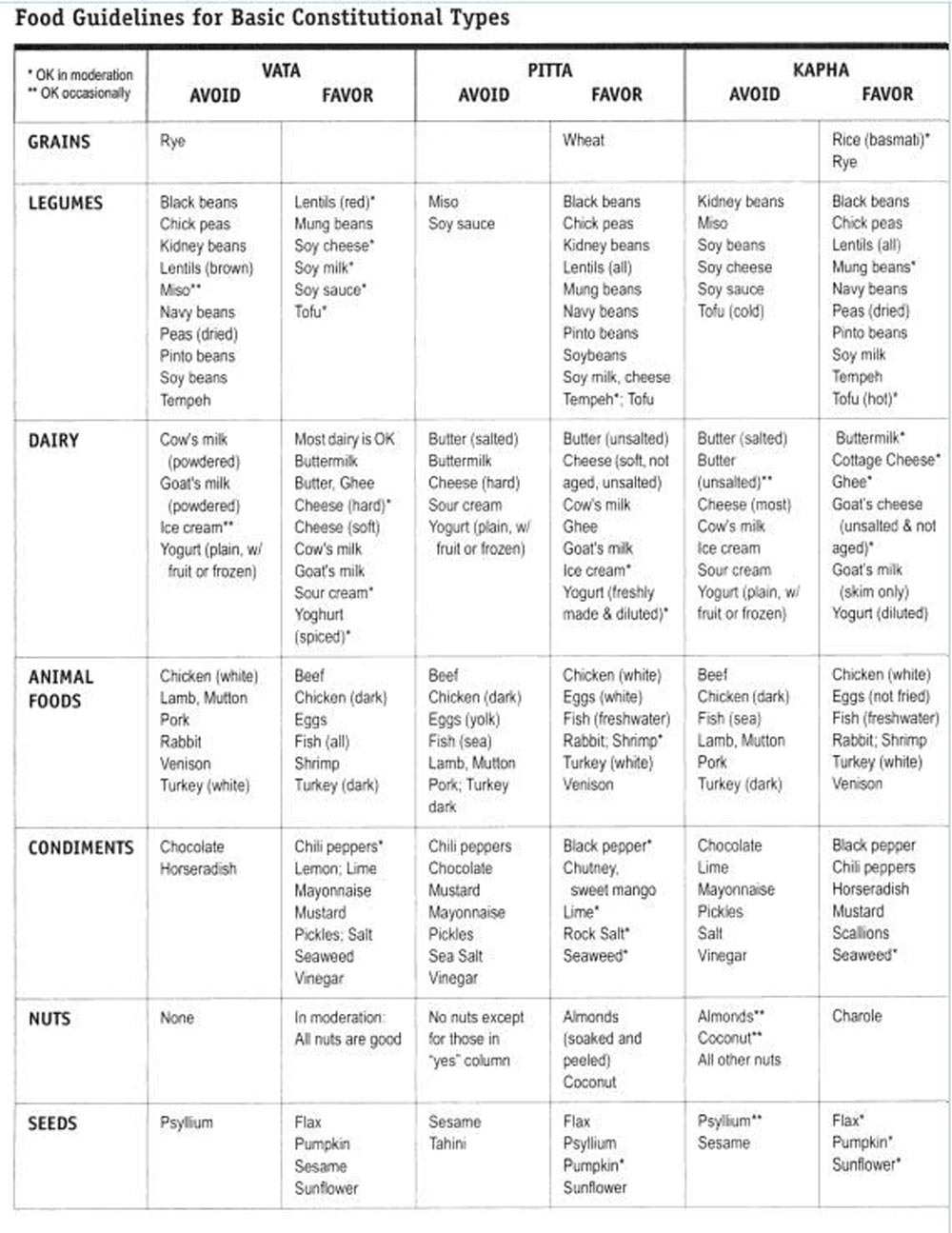
It’s important that your routine, diet included, fits your doshas – the combination of three energy sources that create your unique makeup. When you don’t align with the energy that is unique to you, that is when you feel out of balance. To get started on a deeper exploration of Ayurveda and the wisdom it holds for your health and well-being, take my Dosha quiz to find out which doshas are most prominent in you >>
The Collective Unconscious – Our World Tree of Emotions
I was driving through Colorado last year, on my way to a wedding. I love weddings: young love in full bloom, familial love growing stronger; weddings are beautiful celebrations of love’s connectivity. The love is infectious.
As I was driving to the wedding, driving away from Denver and into the thin air of the Rockies, I passed groves of aspen trees. Thin, white, spindly. Like a whispering wood of spirits that guarded over the mountains themselves.
I had seen these groves before, and I certainly wasn’t the first to be moved by their quiet gravitas – John Denver beat me to it in Aspenglow by a few decades. But as I passed the aspen, I couldn’t help but feel that there were fewer groves than I’d seen previously. Where once there were ranks of groves of aspen – like a silent army of trees – there now appeared sparser outcroppings – a scouting party of aspen.
It turns out that aspen trees aren’t individual organisms. In a grove, each “tree” is a genetically identical “shoot.” All shoots are connected through an extraordinarily rich and detailed root structure. When you look at a grove of aspen, what you’re actually seeing is one giant organism – one giant tree dispersed among the thousands of shoots.
Aspen have been fading in Colorado mostly due to severe drought. When the waters dry up, the aspen die. Because they are interconnected, death affects the entire grove. The pain is experienced by the whole, connected organism – not just the individual shoot.
We wouldn’t know this simply by looking at the trees. We’d simply marvel and wonder how all these individual trees died all at once. Because we’re only looking at the surface. It’s only when we dig deep enough to see the vast, collective consciousness of these aspen can we see how they live and thrive and wilt and die as one.
I am reminded of the retreating aspen when I think about us today. We, all around the world, are hurting. Many of us are sick. Many have died. And many of us mourn the loss of the ones we love. We’re suffering. And while we know that there are millions around the world – just like us – carrying this burden of suffering, we somehow believe that our pain is contained only within ourselves. Our sickness is contained in just our own little shoot. Even though the shoot next to us is also in pain. All the shoots are sick. But we believe that the pain, the grief, the anguish is individual.
Carl Jung, one of the founders of psychology, posited that there existed a vast collective unconscious. Each individual’s psyche was a persona that emanated from this collective unconscious. This “world spirit” was the birthplace of our archetypes of father, mother, safety, danger, hero, and countless others. We, then, are primed to analyze our world through these hard-wired archetypes.
I want to take this one step further. This collective unconscious isn’t merely responsible for how we perceive the world; it’s a profound energy feedback loop that connects us all with each other. It’s our aspen root network. Look around: even in people who have been lucky enough to avoid the coronavirus, rates of mental illness have been skyrocketing. Anxiety, depression, and substance abuse have all increased. As individuals, we suffer when the whole of the world suffers.
There is a blight upon our connected unconscious – a blight that began with a virus whose initial pain sent shockwaves and secondary tremors through our collective psyche. We’re feeling the anxiety of the world.
Why is it hard to recognize this? Perhaps it’s because we’ve come to respect our own crucial roles in this pandemic. Each of us knows to mask up, wash our hands, stay six feet away from each other. We’re critically in tune with our own, singular bodies. But because we’ve been so focused on how we operate as individuals, we’ve lost sight of how we operate as a collective. And therefore we get surprised and confused when anxiety or depression is upon us. “I’m healthy,” we think. “I exercise, I wash my hands. I do yoga and take my probiotic. So why am I so scared?”
We’re scared because the grove is scared. We’re anxious because a soul we’re connected to is anxiously awaiting to see if her mother will make it off a ventilator. We’re depressed because another connected soul can’t see his grandchildren for the holidays. We’re sad because our collective soul is sad.
So what do we do when we know that there is a blight upon our grove?
I think back to my trip to Colorado, about driving away from the aspen and up to the wedding. I think about all the smiles, the tears, the dancing, the kisses, and the relationships strengthened at this celebration of love.
And I remember feeling invigorated and filled to my fingertips with love and generosity.
So my answer is to love. Love yourself, love your neighbor. Love your dog, your cat. Push the love out there like rain in a drought. Replenish your grove, because it’s the only grove we’ve got.
Join me, if you can, on a journey where I show you how to focus the energy of love and light into healing. Our medical intuition course will help you activate your higher heart, so that you can share that positive healing light with the world. Our class just began, but there’s still time to jump right in! We’re saving you a seat!
Connect with yourself. Connect with the world. And let the healing begin.
Today Is Take a Hike Day!
Nietzsche said “All truly great thoughts are conceived while walking.” Going beyond the 19th century philosopher, I would add that walking will not only let you think great thoughts, but will also relieve you of the stressful ones. And who doesn’t need that these days?
You might be having trouble sleeping these days, with all that’s happening in the world with the pandemic its personal fallout for you. You’re stuck at home a lot—hunched over a laptop, sitting in front of the TV, sitting around the table eating more than you should. Sitting, sitting, sitting.
Where are you going to go? You used to walk through airports on your way to someplace other than home, but not now. No walking up and down the aisles of the grocery store: your groceries get delivered. No walking even from the car to a restaurant, as meals get delivered right to your car or your home. Amazon delivers everything and anything; all you have to do is walk to your front door. Doctors get delivered to your screen for telemedicine, and you only have to move as far as your computer to sit in front of Zoom for a business meeting (remember, you can be seen!).
Do you know what’s happening to your body as you sit, sit, sit? According to studies analyzed by the Mayo Clinic, those who sit for more than eight hours a day without much body movement have a similar risk of dying to smokers and the obese. Sitting for long periods increases blood pressure, high blood sugar, abnormal cholesterol levels, and leads to excess fat around the waist—all together, it’s known as metabolic syndrome.
The good news, from studies of more than 1 million people, is that 60 minutes of moderate physical activity each day can counter the problems posed by too much sitting. Stand up every 30 minutes—stretch, walk around for 5 minutes. Stand a bit when you are on the phone or watching TV. Look into whether or not a standing desk would work for you; they are very affordable. 5 minutes here, 5 minutes there, and voilá, you’ll have an hour by days-end.
You’ll burn calories (in studies, women who walk had less body fat than those who don’t), maintain your muscle tone, and improve your ability to move as you age as well as your mental well-being. As researchers at NMHU (New Mexico Highlands University) found: “The foot’s impact during walking sends pressure waves through the arteries that significantly modify and increase the supply of blood to the brain.”
Walking is a cardio exercise that is low-impact on your joints. If you haven’t been much of a walker before, start slowly, going just a block or two. Work up to 30 minutes a day of walking, less time than it takes to cook a meal. Even a short walk each day strengthens your heart and lungs, and reduces your risk of heart disease, diabetes, and osteoporosis.
And it reduces stress. Walking releases those natural painkilling endorphins, lifting your mood and making the day sunnier inside you. And you’ll be far more able to do away with insomnia if you’ve had a good walk.
Last, but far from least, walking gets you out of the house and into the natural world. If you’re in a rural environment, take note of the rhythms of nature—the colors of fall leaves, the crisp air, the flight of birds. Even in an urban area, you can still find trees and plants. Connect to the natural flow and beauty around you. Walk in the early morning to sing along with the birds. Walk at sunset to bathe in the glory of colors. Walk at night and absorb some lunar energy. John Muir, the great naturalist, said, “In every walk with nature one receives far more than he seeks.”
It takes no special equipment. It doesn’t cost anything. It doesn’t require a lot of planning, or athletic ability. As an old proverb says, “one step at a time is good walking.” Just get up, grab your house key, put on a hat and mask, and go for it!
The Secret of True Joy
The secret of true joy is that it’s not actually tethered to outside circumstances. It has little to do with what’s going on around you. In fact, true joy is a well that you can fill with your internal perspective, thoughts, and attitude, and you can draw from that well to fill you up, especially in times like these.
Recently a student who heard I was working on a presentation on happiness shared the following with me. It’s from a post that’s been circulating around the internet for awhile.
Meet Mrs. Jones, who models the well of joy:
This 92-year-old, petite, well-poised and proud lady, who is fully dressed each morning by eight o’clock, with her hair fashionably coiffed and makeup perfectly applied, even though she is legally blind, moved to a nursing home yesterday. Her husband of 70 years recently passed away, making the move necessary.
After many hours of waiting patiently in the lobby of the nursing home, she smiled sweetly when told her room was ready. As she maneuvered her walker to the elevator, I provided a visual description of her tiny room, including the eyelet sheets that had been hung on her window.
“I love it,” she stated with the enthusiasm of an eight-year-old having just been presented with a new puppy.
“Mrs. Jones, you haven’t seen the room…. just wait.”
“That doesn’t have anything to do with it,” she replied. “Happiness is something you decide on ahead of time. Whether I like my room or not doesn’t depend on how the furniture is arranged, it’s how I arrange my mind. I already decided to love it. It’s a decision I make every morning when I wake up. I have a choice; I can spend the day in bed recounting the difficulty I have with the parts of my body that no longer work, or get out of bed and be thankful for the ones that do. Each day is a gift, and as long as my eyes open I’ll focus on the new day and all the happy memories I’ve stored away, just for this time in my life.”
She went on to explain, “Old age is like a bank account, you withdraw from what you’ve put in. So, my advice to you would be to deposit a lot of happiness in the bank account of memories. Thank you for your part in filling my memory bank. I am still depositing.”
And with a smile, she said: “Remember the five simple rules to be happy:
1. Free your heart from hatred.
2. Free your mind from worries.
3. Live simply.
4. Give more.
5. Expect less, & enjoy every moment.”
Isn’t that beautiful?
I would add that when you find what you’re meant to be doing on this Earth, you’ll have no shortage of fulfillment, joy, peace, resiliency, love, and everything else your heart desires.
Remember that true happiness and abundance is what you feel in your soul, and what you create with your mind, your heart, and every molecule of your being.
If you want more happiness in your life, the answer is to identify your unique gifts (the things you’re good at that make you FEEL good), to stay connected to Source, and to focus on service. With this knowledge imprinted in your heart, there’s no limit to what the universe can provide for you and for all the things that matter.
If you’re attracted to this kind of insight, I hope you’ll join me right here for my talk this coming Sunday on How to Be Insanely Happy — and invite your family, friends, coworkers, and community to join you!
Can’t Go Outside? 7 Ways to Get Grounded Indoors
Have you noticed that being outside lifts your spirits?
Take a deep breath and picture yourself in your favorite landscape. Imagine the warm sun on your skin, the twittering of birds in the trees, the smell of pine, flowers, or maybe the ocean in the air…are you smiling? Do you feel more relaxed?
The great outdoors is called that for a reason: spending time under the sky rather than a ceiling just makes you feel good. Mother Nature is full of healing power, and connecting to that earth energy can have incredible benefits for your mind, body, and soul.
But what if you can’t get outside?
Right now, as we are in the midst of a pandemic that has many frightened to go outside (and others legally prevented from doing so), how can you get the same benefits, the same feeling of peace and wellbeing, without leaving your house?
What is Grounding?
Your ancestors had no trouble connecting with Mother Nature, and getting grounded. They were outside every day, all day, rain or shine. You are lucky to have a roof over your head but the downside is a loss of that daily interaction with the earth, and a corresponding lack of grounding.
Grounding is the practice of energetically connecting to Earth. This releases negative energy from your field into the ground, and draws positive energy from Mother Nature into your field and chakras, which replenishes and recharges your whole being.
Feeling a Little Fuzzy?
Your first chakra, also known as your root or base chakra, is the foundation for the energy flow in your body. This chakra keeps you firmly in your body and grounded, and if it needs cleansing or charging, you may feel a little “spacey” or somewhat out of your body. Additional symptoms of a dysfunctional first chakra can include: lightheadedness or a “floaty” feeling, forgetfulness, clumsiness, a feeling of being lost or actually getting lost, having trouble staying focused or present, fatigue, and a general dazed sensation. With an imbalanced first chakra, your other chakras are likely to be affected and become dysfunctional as well.
Indoor Grounding 101
The best ways to strengthen your bond to Earth is to spend time outside—walking barefoot on sand or grass, swimming in the ocean or a lake, taking moon baths, and hugging trees. But as the weather shifts from the heat of summer to the crispness of fall and then the deep chill of winter, you are less likely to be spending time barefoot or sleeveless outside your heated indoor space.
So how can you stay grounded?
1. Sit in sunlight
If you’re lucky enough to live in a home that gets plenty of sunlight, take advantage of that!
Not only does the sun provide natural vitamin D, which boosts your immune system, it also charges and replenishes your energy field. Sunlight is like natural rays of energy healing from the heavens, so soak it up as much as possible.
Like a cat curling up for a nap in the window, have a seat in a patch of sunlight coming through a window and let it radiate into your skin, into your chakras and energy field. Twenty minutes in the early morning or late afternoon would be perfect!
2. Keep a stone handy
Stones are direct conduits to earth energy. They are literally earth, so they can help ground you just by touching them. Kyanite, hematite, and garnet are good choices for grounding crystals, but any piece of rock will do.
Be sure to bless it for the purpose of keeping you centered and connected to Mother Nature, and then keep it in your pocket for quick access anytime you start to feel disassociated from the earth or your body.
3. Exercise
Getting out of your head and being present in your body is an important part of grounding. Physical activity can help to shift your energy from your thoughts to your body as you focus your attention on your body and the world around you.
Yoga, pilates or martial arts can be particularly effective because they center your mind, body, and spirit simultaneously.
4. Eat
Like exercise, mindfully eating brings your attention to your body. Gaining sustenance from the earth also helps to connect you to it—to remind you of that fundamental truth of energy medicine: you are connected to everything.
Try to eat as many fresh cooked vegetables as you can, and especially root vegetables which grow under the soil and carry strong earth energy.
5. Take a salt bath
Salts have natural healing capabilities, as does water, so when you combine them in a warm tub, you take cleansing to a spiritual level. This helps to heal and cleanse your body, mind, and soul, including stripping unwanted negative energy you may have stuck to you from someone else.
Salt baths simulate swimming in the ocean, which is one of the best ways to ground yourself.
6. Visualize
There is an easy visualizations you can do from home that will help to connect you to the earth. Picture yourself as a tree, with roots growing from your feet. Feel your roots sinking into the soil, extracting nourishment and energy that you can bring into your body making you healthier. Imagine your roots sinking deeper and deeper, giving you a stronger foundation, a sense of calm, and a greater bond with nature.
7. Take a healing course
Healing courses are always a good way to get grounded: being in the presence of others and working on grounding exercise help you be in your body and connect to the earth.
We will hopefully come out of this soon (and hopefully stronger than ever before). But in the meantime, look at this is a great opportunity to learn a skill that will ensure you are grounded, happy, and healthy year-round, no matter where you are.
Dream Journaling: Tap Into Your Inner Wisdom for Guidance & Healing
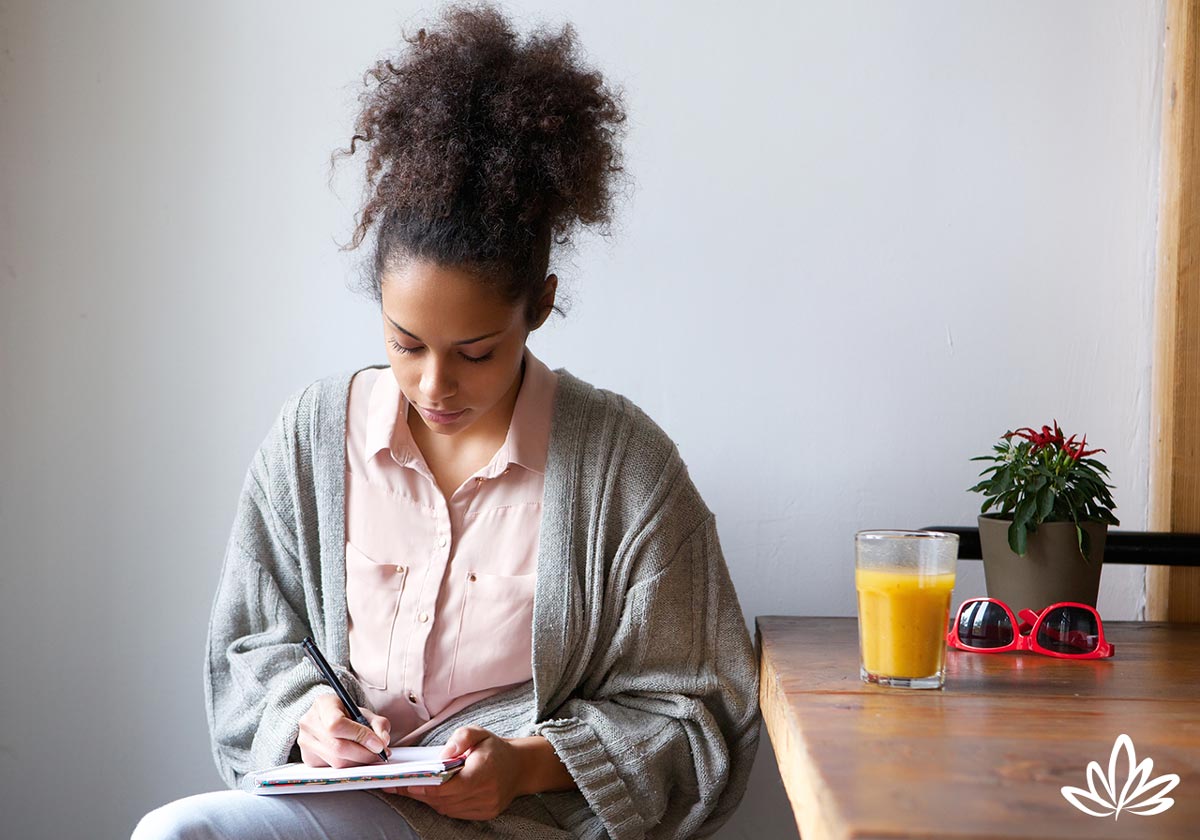
Your dreams are filled with wisdom to guide you through every aspect of your life.
They give you access to knowledge beyond your ordinary, everyday awareness. They can show you the future, preparing you for challenges and opportunities. They can speak to your past, providing you with clues for healing old wounds. And they can guide you in the present, offering you wisdom for making the best decisions and honoring your soul’s desires.
A powerful way to start tapping into the wisdom of your dreams is to keep a dream journal.
Why you should keep a dream journal
The benefits of dream journaling are as vast as the realms your dreams take you to. Here are just a few of my favorite reasons to keep a dream journal.
Healing, transformation, and growth:
When you look back on your dream journals, you hold up a magic mirror that can reveal patterns in long-standing challenges. Your dream journal can even serve you as a data log that gives you insight into themes regarding your attitudes, beliefs, experiences, and actions.
You can also get precognitive glimpses of things that appear in your waking world later on. Dream journaling helps you develop a sixth sense, opening you to correct a course you’re on, restore your inner compass, expand your consciousness, or develop telepathic or clairsentient skills.
Brain balance:
Dream journaling can benefit your corpus callosum — the part of the brain that joins the right and left hemispheres, physically connecting your intuitive abilities with your analytic abilities.
In “Dreams Make Me Smarter,” one of our students wrote: “I let the dream images come to me, then write the dream in my journal, which engages my left brain. I pay close attention to any right-brain feelings about the dream. Then I brainstorm about any associations with those images or feelings. Working with dreams is a whole-brain exercise!”
Creativity:
Dreams offer you a treasury of images and symbols that can light your creative fire if you’re an artist. And even if you’re not, recording your dreams can inspire you to tap into the creativity inside you that yearns to be expressed.
Sketch that mountain or underwater temple when you wake up, then turn it into a deeply expressive painting or sculpture! Write down a dream-encounter as a short story, or see how it’s a clue into how to finish a scene you’ve been working on for your novel. Record that guitar line that came to you in your dreams. Whatever ways you express yourself — or would like to express yourself — journal your dreams to ignite your imagination.
How to keep a dream journal
Choose a notebook or a specially-crafted dream journal with thick, high-quality paper that you can joyfully write and sketch in.
Keep your journal near your bed and write your dreams in it as soon as you wake up. If you find that your bedside notes are barely legible, try transcribing them into a Google Doc later in the day.
While I suggest charging your phone away from your bedroom at night (so you can get a nightly retreat from constant digital clutter and melatonin-disturbing blue light), another option is to record a voice note as soon as you wake up. Then use a voice-to-text program to transcribe your dreams.
Ready to start recording the wisdom of your dreams?
Here are 5 journaling prompts to get you started:
- When was the dream? Note the date (including the year) so you can look back on the entry in the context of what was going on in your life and the world at the time.
- What happened in the dream? The key is to record your dream in as much detail as you can. Where were you? What was it like? What were the events? What did you do? Was anyone else there? What did they do or say? When did the dream take place? What did the events remind you of? If a detail seems too trivial or obvious to note, write it down anyway. When you look back on your dream entries, you’ll find that what might have seemed like useless details are highly significant in retrospect.
- What did you think or feel during the dream? Your internal experience is one of the most (if not THE most) telling aspects of your dreams. Did you feel elated, joyful, rejected, connected, relieved, anxious, relaxed, fascinated, blessed? Did you think “This reminds me of the time I…” Or maybe you thought “This is a place I’d love to….” Whatever your interior response was, make a note of it.
- How does the dream connect to your highest desires? This year, Spirit is really calling us to focus on what we want to create in our lives on this beautiful planet. We all long for something. Look back on the things you’ve desired in your past that you’ve manifested. That’s evidence that goals come to fruition, that “dreams come true”! So think about what you want at this point in your life. A new house? Healing from an illness? A fulfilling relationship? A rewarding career that suits your soul? Clean waterways? The end of injustice? Jot down anything about your dream that seems connected to your longing.
- What do you think the dream means? Don’t worry right away about dream interpretations like “owls represent wisdom” — you can look those up later if you’d like. For now, focus on writing down what significance the feelings, events, people, and images of the dream have for you. Because it’s your dream, you have the most insight into what it’s telling you.
Tap into the creative, healing wisdom of your dreams now!
If you want to start journaling right now, write down your response to one of these prompts:
- Last night I dreamed…
- When I was a child, I dreamed…
- The best dream I ever had was…
- A recurring dream I’ve had is…
- The other day I had the strangest dream…
Start writing now or when you wake up tomorrow, and watch the wisdom flow from your soul, through your pen, and into your life.
Dream on!
To learn more about tapping into the power of your dreams, you can checkout my course on Astral Wisdom here.
Do you have an ‘Energy Vampire’ in your life?
You are born pure light…
In childhood, your light is vulnerable to the energy of those around you. If you experienced trauma as a child or were raised in a dysfunctional family or with an unhealthy parent, this changes your energy, and can even “darken” your light.
This sensitivity likely developed as a way to stay safe and get your needs met — scanning the energy of the room or the energy of your caregivers, and calibrating your energy and presence to match what was appropriate.
Over time, this way of being in the world can diminish your essence — diluting what makes you “you,” and negatively influencing your emotions, your health, and your ability to authentically live the life you were meant to live.
And now, likely a caregiver yourself, you’ve been conditioned to bond with others by taking on their energy, so loved ones can perpetuate this pattern even if they’re not an “energy vampire.”
Today, you can begin to clear out other people’s energy from your ENTIRE system, and call your energy back to yourself. The first step is to understand the types of “energy vampires” and how to establish boundaries to protect yourself.
And actually, the step before the first step is always meditation. If you feel like you are “under attack” from other people’s energy, spending time in prayer and meditation is the fastest way to reconnect to yourself and strengthen your grounding — the first line of defense against other people’s invasive energy. I recommend meditating twice a day, using a mantra, that I provide.
Energy follows thought. As you bring your attention back to yourself (with loving kindness!), your energy will follow.
Imagine that you are a big magnet, effortlessly drawing your energy back to yourself and then running that energy down through your grounding, expanding your base and strengthening your energy field around you.
Here are a few insights on energy vampires…
In general, energy vampires drain your energy. They are often creating or contributing to “drama” and often take a negative, “glass-half-empty” approach to life. They can be very critical and judgmental — of you and others.
They also tend to be filled with worry and anxiety, and look to you to fix them or solve their problems. And, of course, you’re quite good at calming them down and finding solutions!
They need you and suck your time, attention, and focus away from your priorities. Even when you’re not with them, you are thinking about them or their needs.
These exchanges can leave you feeling tired, melancholy, even depressed — even if you think you are being of service and helping at the time.
When your energy is depleted by others, your sleep can be disrupted, you feel sluggish, and lack mental focus. You become vulnerable to illness, poor eating habits, and even addictive behaviors.
Recognize anyone on this list?:
- “Betrayed” energy vampireThis energy type, along with many of the energy vampire types, can feel like an “old” relationship or like there is more history to the relationship than this lifetime. Karmic ties likely keep you tethered to this person, and the dynamic is one of “winning the fight.” Their energy field can be highly charged and they can feel aggressive or like an invasive weed in your garden.It’s essential to reinforce your energy field and grounding when interacting with this type. Imagining a waterfall between the two of you will help protect you and neutralize their energy coming at you. Take slow deep breaths, lower your voice and slow your cadence.Dealing with this type involves an Aikido-style approach where you step out of the way of their incoming energy bombs.
- Fear-based energy vampireThis type is full of fear and insecurity. They are unable to fully inhabit their bodies and connect to their own grounding. They are disconnected from their emotions and are difficult to have linear conversations with, they are “all over the place.” Being kind and helpful, you want to reassure them, troubleshoot their problems, or calm their anger. You become ensnared in their energy field.To care for yourself in this dynamic, will require you to have very firm and clear boundaries. You will need to maintain conscious awareness that their needs and feelings are never ending and you cannot fix or help them. If you cannot maintain your own energy and grounding separate from them, you may need to avoid this type.
- Insecure energy vampireThis type holds the worldview of scarcity. There is not enough for them and they’re in fear that their needs won’t be met and they’re driven by a fear of abandonment. It is sort of a self-fulfilling prophecy, because they are afraid you will abandon them, yet they are so needy, you have to remove yourself to replenish your energy.The intensity of their “lack” is projected onto you with the expectation you’ll fill their bottomless cup. They are often compulsive, jumping at any chance to fix their problem (which is generally other people) or chase after the “next best thing” that is “going to change everything” and solve all their problems. Between managing their expectations and their irrational schemes, you become lost and massively drained.Similar to the fear-based type, to care for yourself in this dynamic, will require you to have very firm and clear boundaries. You will also need to increase your self-care routine to ensure that you are mentally, physically, emotionally, and spiritually fit to be around them without losing yourself. Again, if you cannot maintain your own energy and grounding separate from them, you may need to avoid this type.
- Passive-aggressive energy vampireThis type brings lifetimes of victimization into this lifetime. Their worldview is one of victimhood and everything happens “to” them. They are unable to take care of themselves and they rely on others to do for them. They don’t communicate their needs or wants and then project that others are not caring for them or helping them. They blame everyone but themselves, however most of this is unspoken so it is through their energy and nonverbal communication. They are very manipulative and use a dynamic of switching between appreciation and validating how much they need you, with guilt and scorn. You are either helping or hurting, and everything is about them — from their perspective.Recognizing that this is not about you, that you have done nothing wrong, and that this is their storyline that they are living out, will help you stay sane and keep from merging with their energy trying to “prove” yourself and your intentions. Remembering that there is nothing you can say or do or explain, can shift this dynamic within them. Amplifying your own energy within yourself and deepening your grounding will turn up your vibration and keep you immersed in your own essence and anchored in the center of your energy field.
Understanding your role in these relationships will also help you to shift the dynamic from your end. Energy vampires will always “suck” so it’s up to you to put a stop to it and protect yourself.
If you’d like to learn more about how to protect yourself from other people’s energy, and turn your sensitivity into a healing tool, check out my signature LifeForce Energy Healing IV® training here.






